The time has come to gather all observations. The TCL P7K / P79K is a television that cleverly juggles compromises, offering much more in its price range than we could have expected. Its undeniable asset is the VA panel, guaranteeing deep blacks and high contrast, and the surprisingly rich package for gamers (with VRR and support for 120 Hz at lower resolutions) makes it a phenomenal proposition for console owners. The whole is tied together by the functional Google TV system. Of course, the low peak brightness means that HDR content lacks spectacular bursts, and the TV's performance in sunlit rooms is limited. And although, at its relatively low price, the P7K / P79K is quite a decent option, its biggest rival turns out to be… its more refined sibling, the P8K. Often, FOR a small additional payment, we get a device of a higher class – with a native 4K 144 Hz panel, significantly better audio system, and generally higher quality of operation, which is reflected in its much higher rating on our portal. Therefore, the final verdict must be as follows: if your budget is absolutely non-negotiable, the P7K / P79K will be a good and cost-effective choice. However, if you can afford to add a small amount, the P8K model will offer significantly more and will ultimately be a more satisfying investment.
- Matching (Score)
- Our verdict
- TV appearance
- Where to buy
- Contrast and black detail
- HDR effect quality
- Factory color reproduction
- Color reproduction after calibration
- Smoothness of tonal transitions
- Image scaling and smoothness of tonal transitions
- Blur and motion smoothness
- Console compatibility and gaming features
- Input lag
- Compatibility with PC
- Viewing angles
- Daytime performance
- Panel details
- TV features
- Apps
- Playing files from USB
- Sound
TCL P7K / P79K vs TCL C7K / QM7K
Direct comparison
P7K / P79K
C7K / Q7C / MQLED85K / C79K / C71K / QM7K
Available screen sizes: 50”
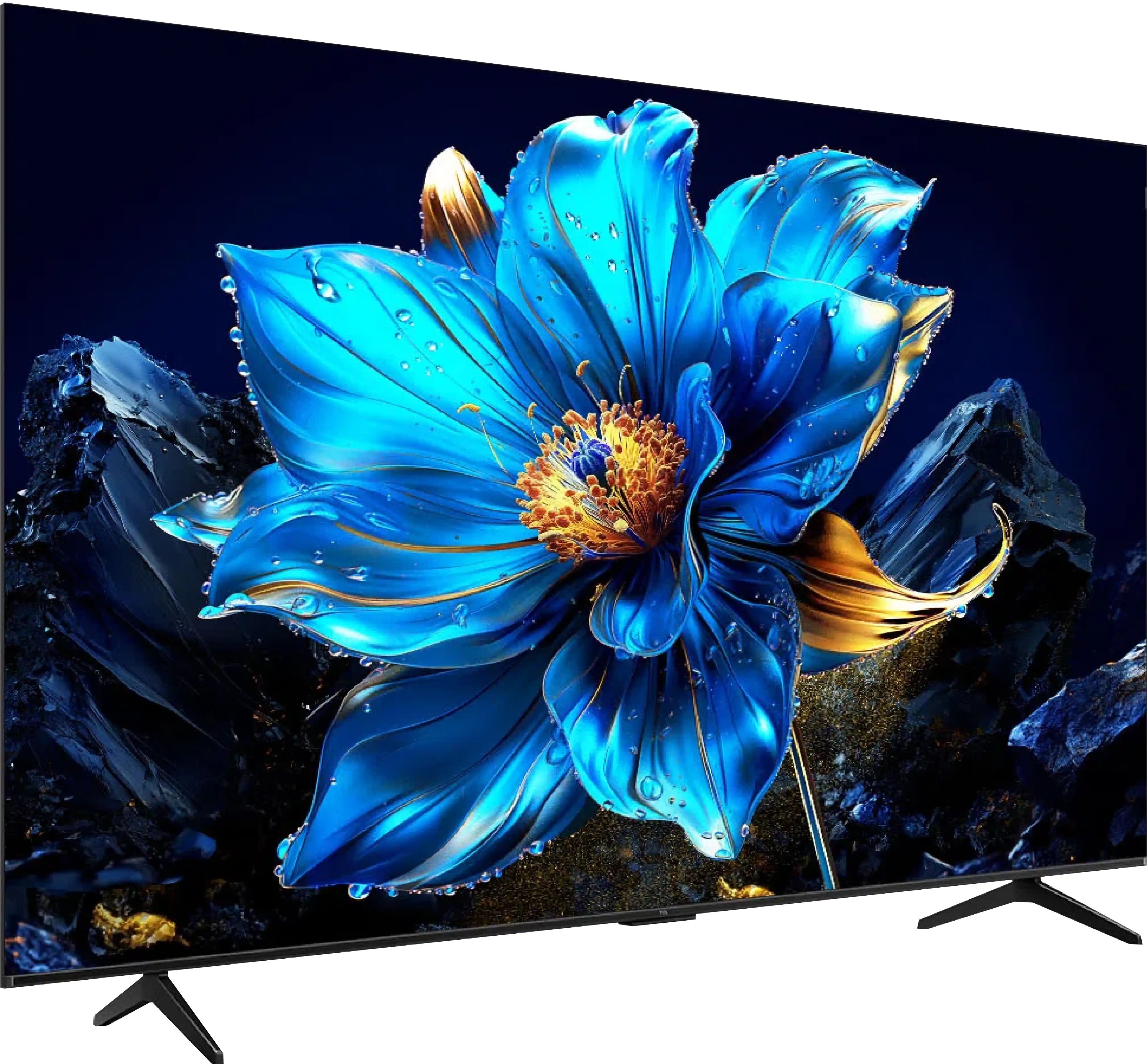
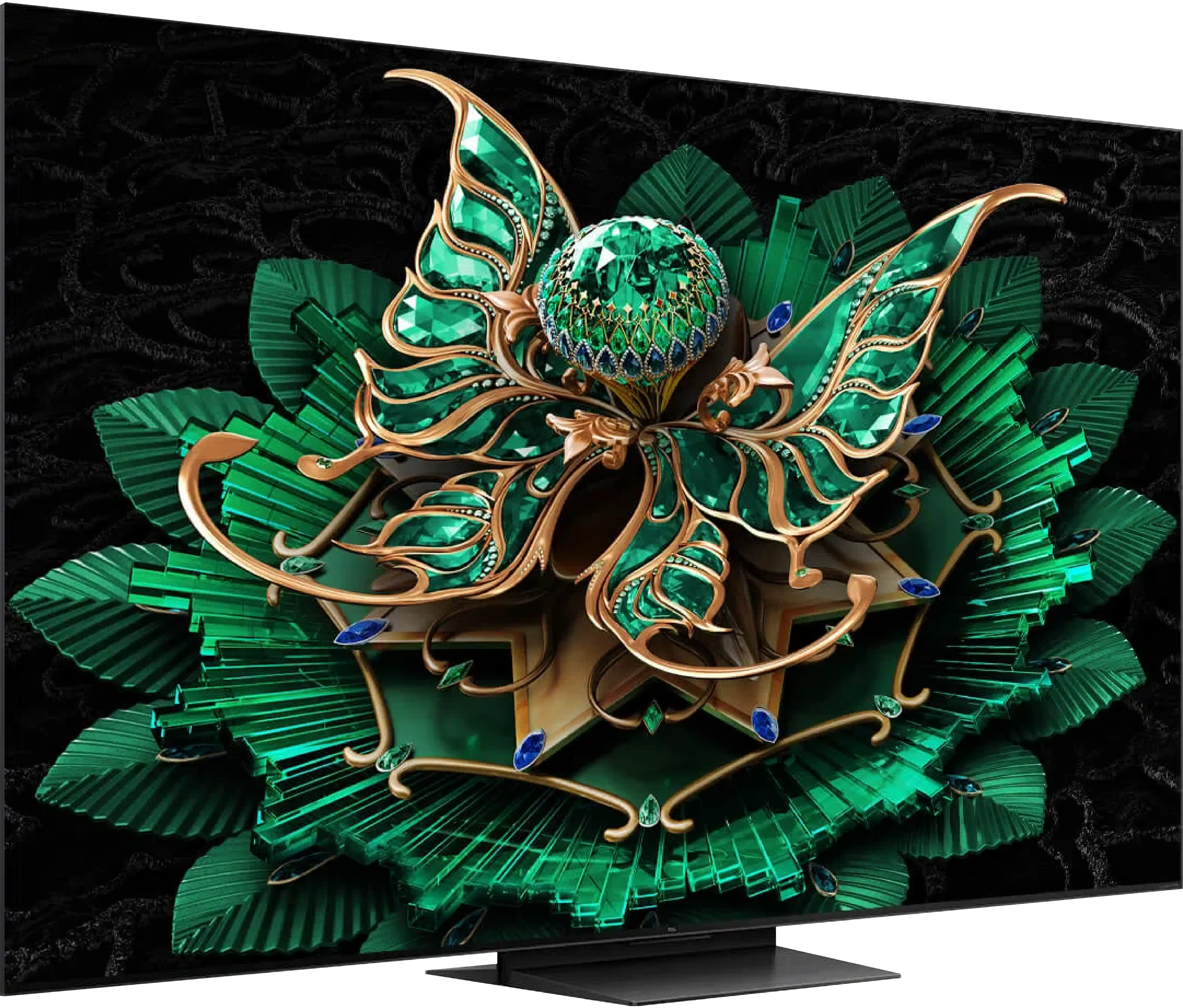
Panel type: LCD VA
Resolution: 3840x2160
System: Android TV
Model year: 2025
Complete the survey to find out the result

Panel type: LCD VA
Resolution: 3840x2160
System: Google TV
Model year: 2025
Complete the survey to find out the result

Overall rating
5.8
7.2
Movies and series in UHD quality
5.1
6.7
Classic TV, YouTube
5.5
6.5
Sports broadcasts (TV and apps)
5.3
6.6
Gaming on console
7.1
8.5
TV as a computer monitor
2.0
8.4
Watching in bright light
4.6
6.1
Utility functions
7.0
7.3
Apps
9.6
9.6
Sound quality
6.2
7.0
Complete the survey to find out what fits your preferences
Advantages
Great blacks and high contrast
Support for 120 Hz in gaming (at lower resolutions)
Very low responsiveness (input lag), great for fast-paced gaming
Modern features for gamers, such as VRR and ALLM
Efficient Google TV system with a vast app base
Very well-functioning Google Assistant in Polish
Easy screen mirroring from your phone (support for AirPlay)
Attractive price
Very good black - VA panel with a large number of Mini-LED zones
High brightness in HDR - over 1000 nits
Excellent for gamers - HDMI 2.1, low input lag, VRR, ALLM, etc.
Good motion smoothness - 144Hz panel
Supports multiple HDR formats: HDR10, HDR10+, Dolby Vision
Google TV operating system with access to a vast array of applications
Pleasant sound from built-in speakers
Disadvantages
Low brightness, which makes the HDR effect weak and the image poorly visible in sunlight
The image loses quality and colour when viewed from an angle
Not suitable as a computer monitor due to very poor text readability
Strong dithering phenomenon (highly digital image)
Google TV can operate with minor stutters
No USB recording and PiP functionality
Our verdict
There are televisions that come for testing, and you immediately think: “oh, just another average one, probably like many others.” And basically… that’s true. The TCL C7K doesn’t try to dethrone OLEDs, nor does it shout from the box “revolution!” Yet, after a few days of testing, it’s hard not to think: “wow, this is really good equipment.” And that’s exactly what the C7K is. The biggest asset of the C7K is its decent picture at a reasonable price – MiniLED and quantum dots do their job here. The colours are vibrant, the brightness satisfactory, the contrast impressive, and with the right settings, you can truly enjoy viewing in the best quality. The second strong point is the smoothness of motion – both in sports and games. Support for HDMI 2.1, variable refresh rates, 144 Hz, and a whole host of other features make gaming on this TV a pure joy. Then there’s Google TV, which – despite some minor shortcomings – provides access to nearly an endless library of applications. Voice control, quick access to YouTube, Netflix, AirPlay support – it has everything you need for everyday use. Are there downsides? Of course. The Google TV system can have moments of “hesitation,” and MiniLED – being MiniLED – can stumble on very complex film scenes. But these are details. After all, the C7K is a mid-range model – and in this class, it performs simply excellently. So if you are looking for a reasonably priced, modern television with Google TV that looks good, works well, and plays quite decently without ruining your budget – the TCL C7K definitely deserves your attention.
TV appearance
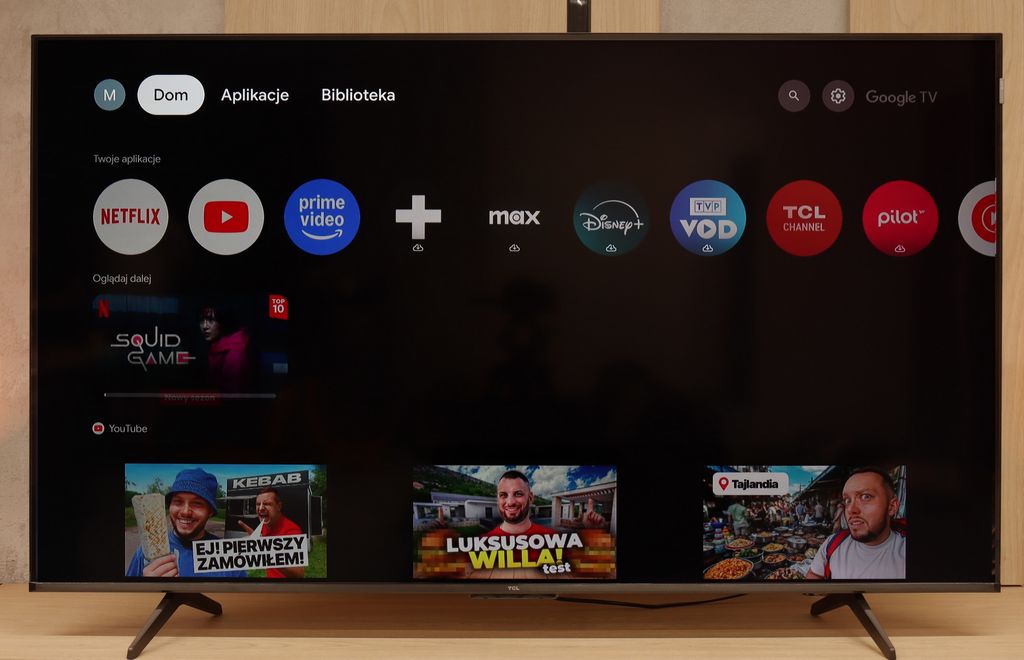
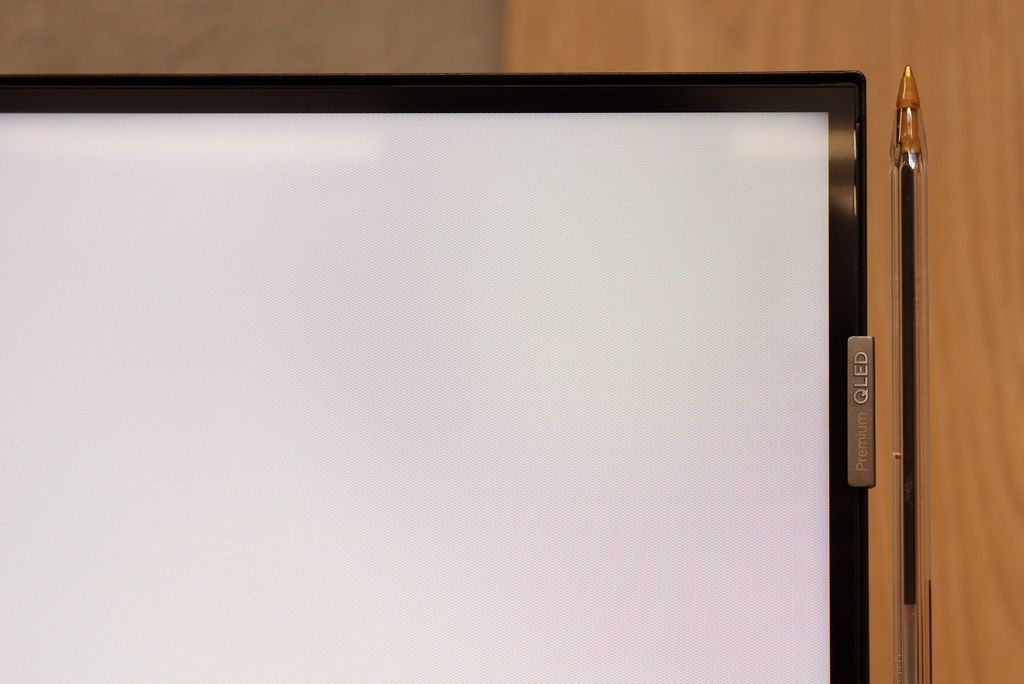
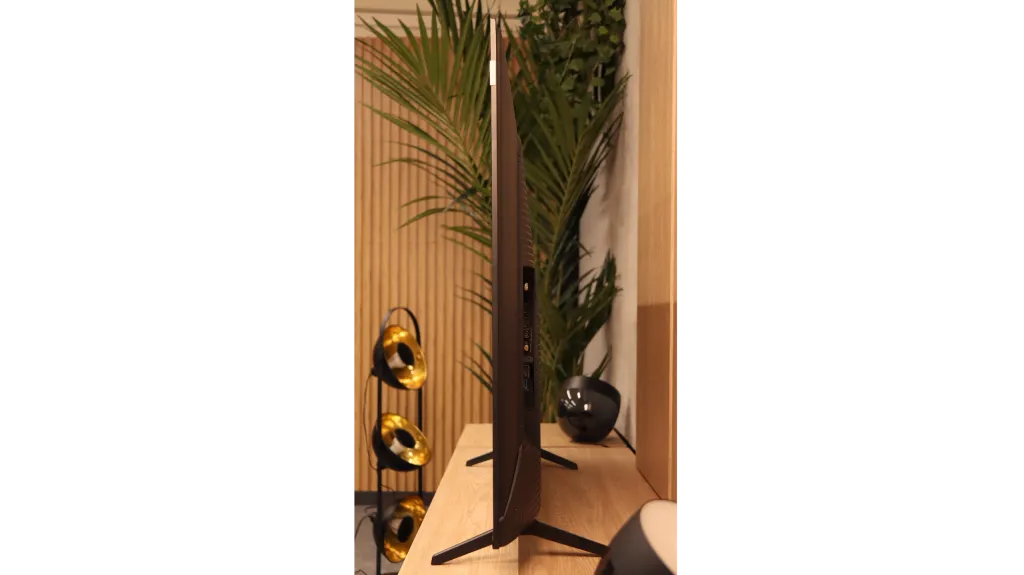
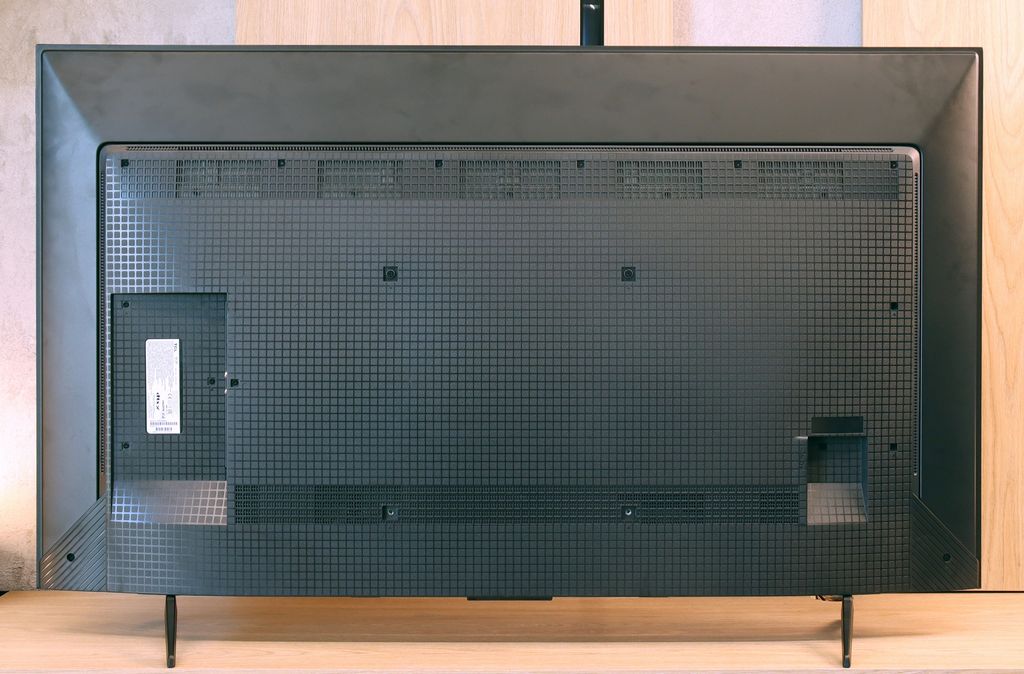
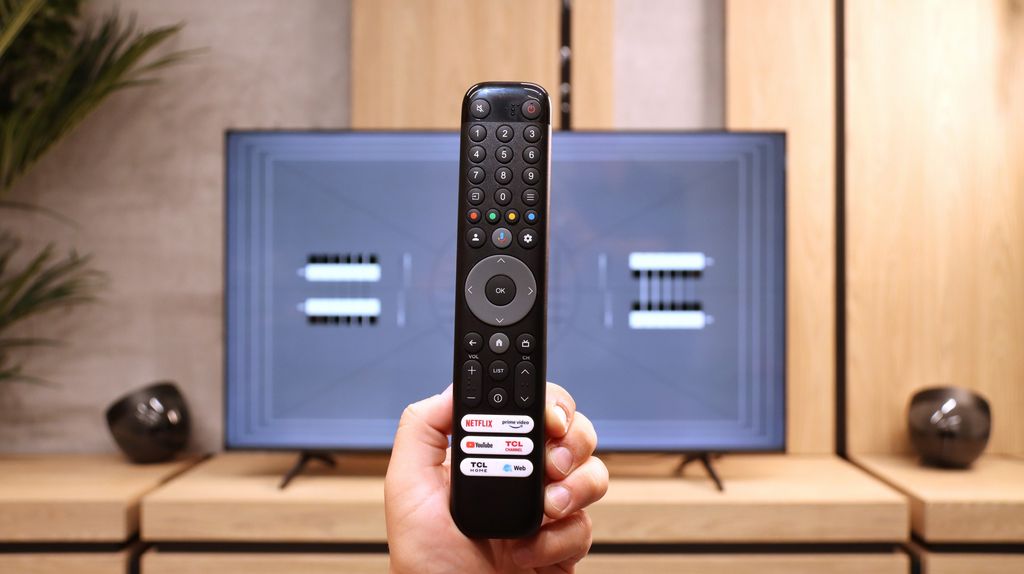
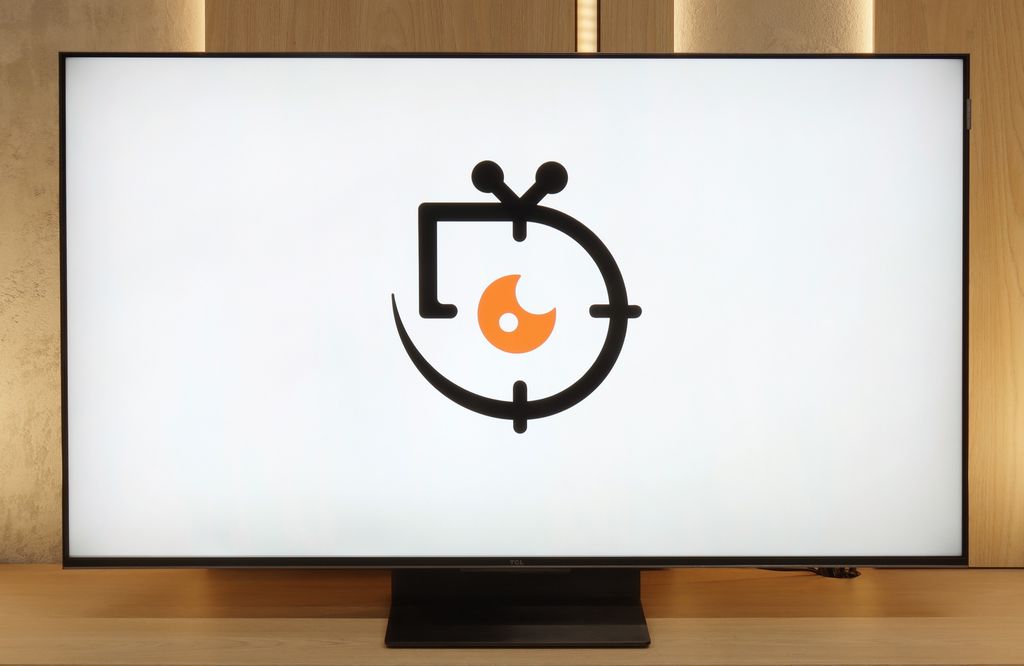
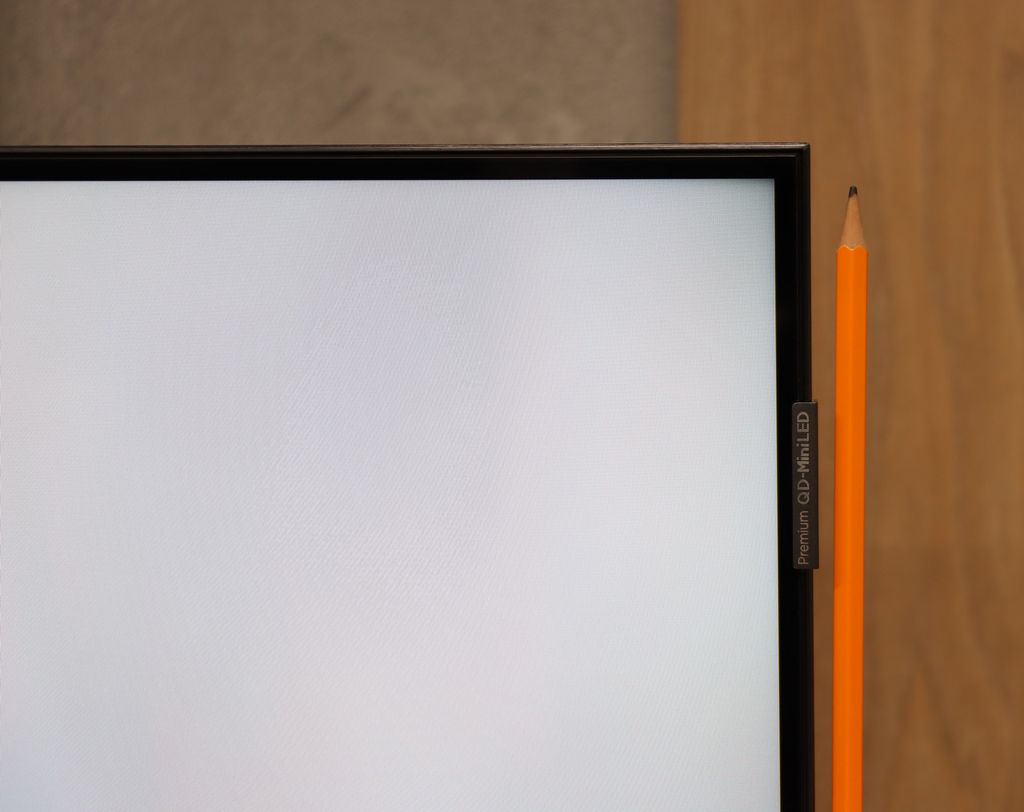
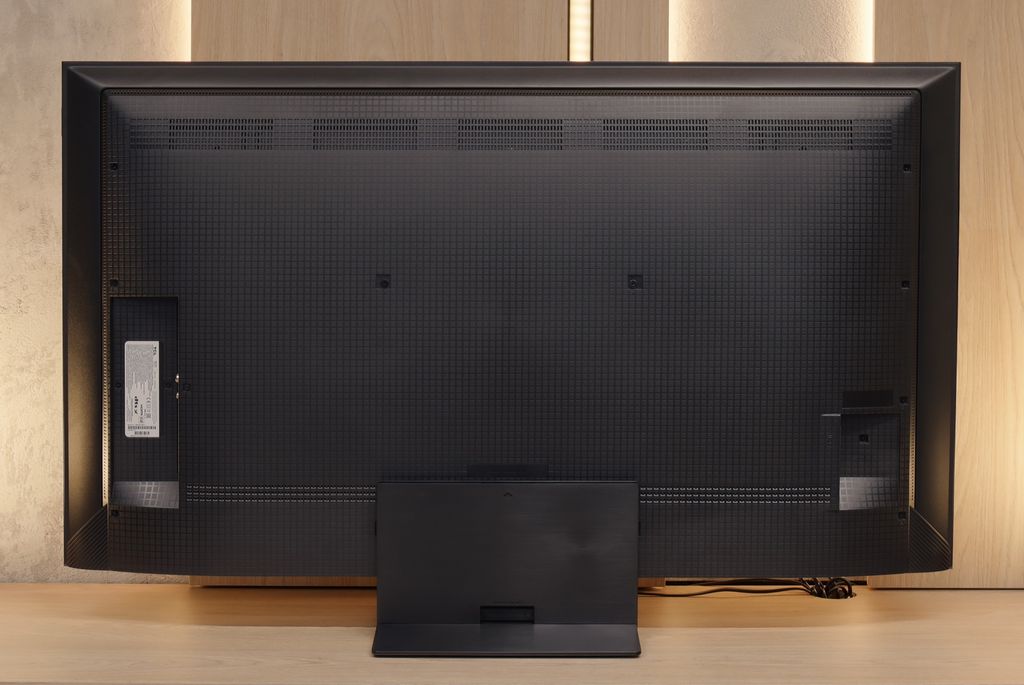
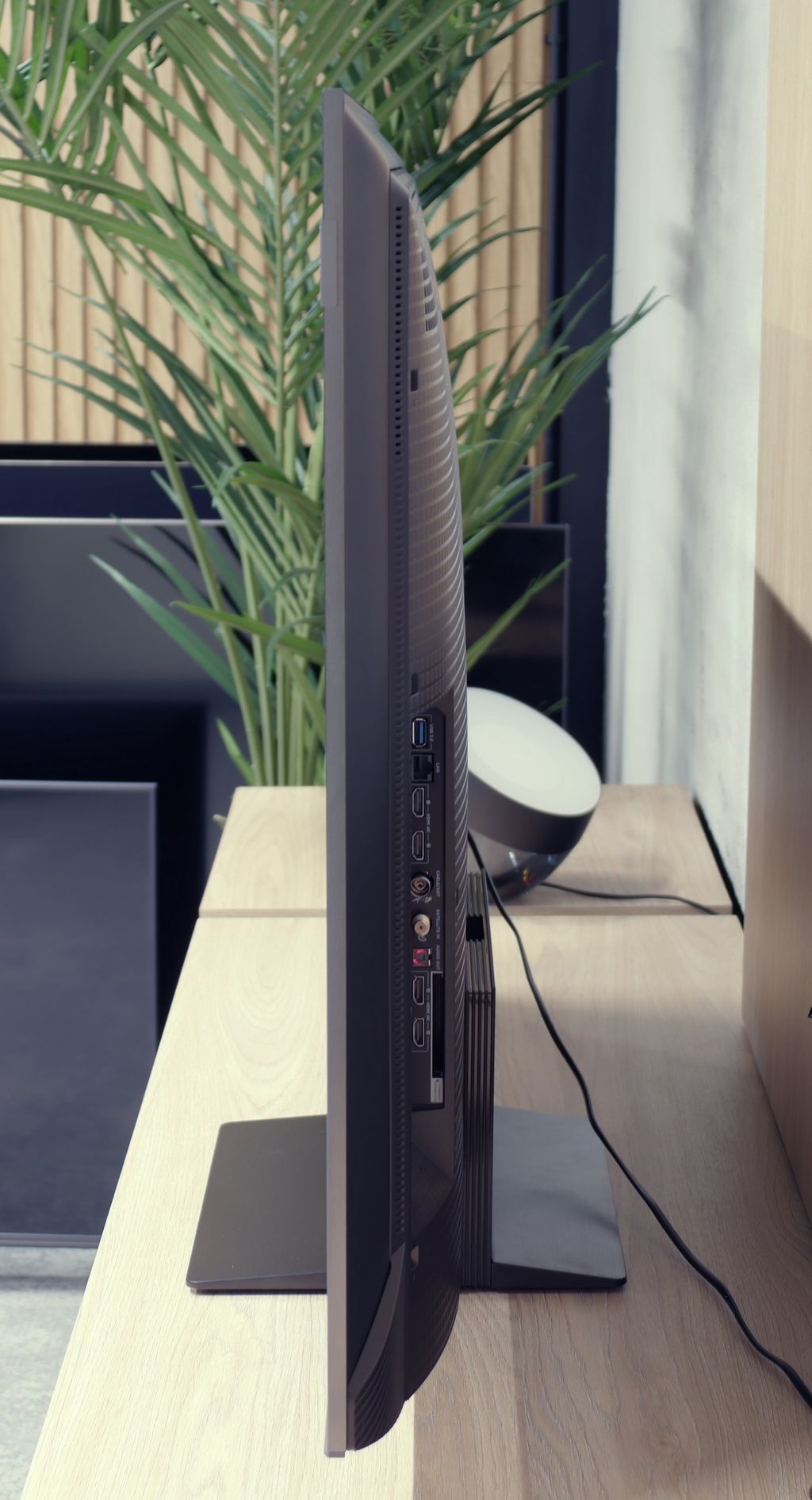
Contrast and black detail
5.2/10
7.1/10
Local dimming function: No
Local dimming function: Yes, number of zones: 336 (14 x 24)
Contrast:

Result
4,000:1

Result
6,500:1

Result
2,700:1

Result
2,800:1

Result
3,800:1

Result
161,000:1

Result
18,750:1

Result
13,150:1

Result
6,300:1

Result
4,200:1
Halo effect and black detail visibility:
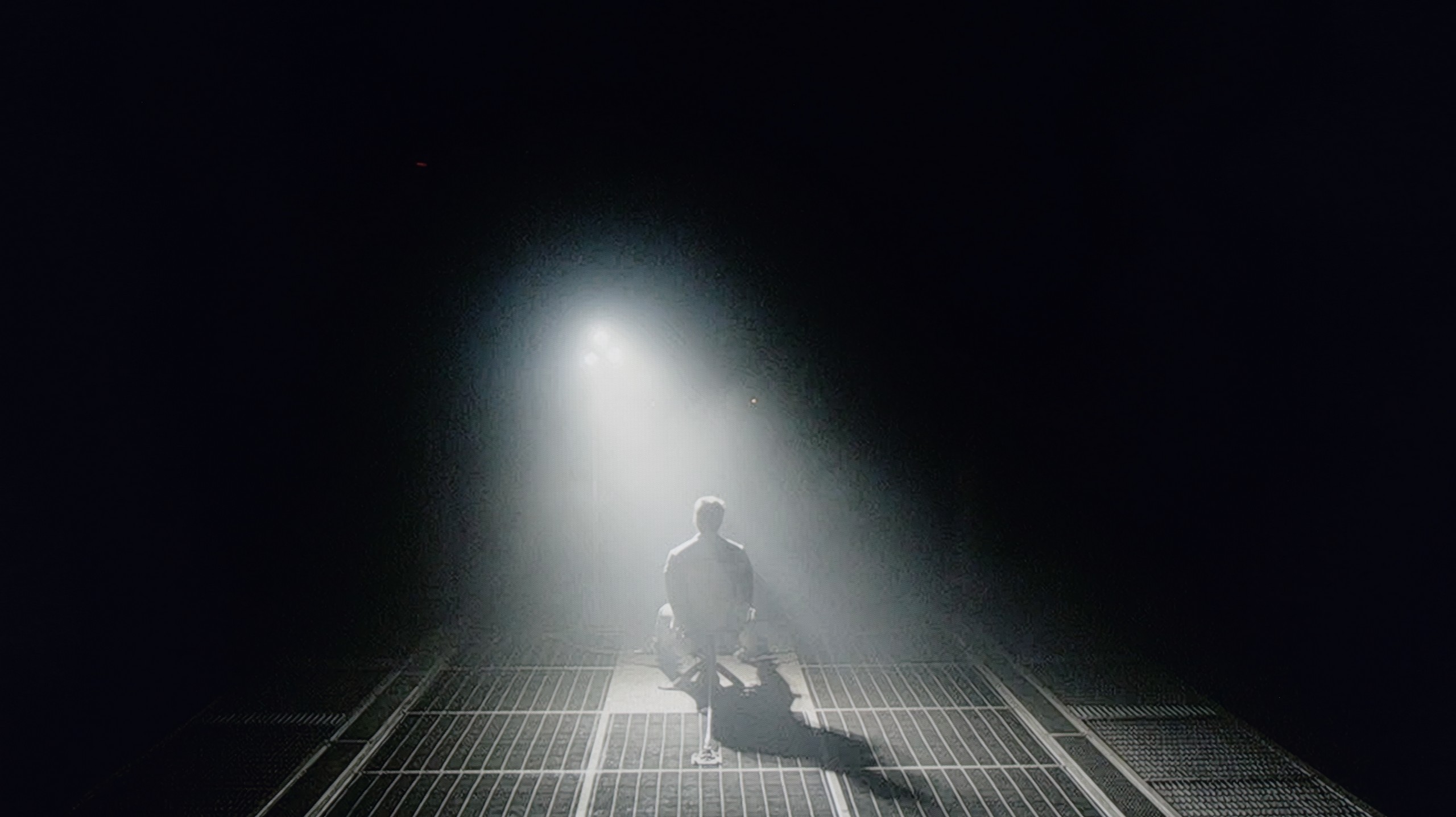
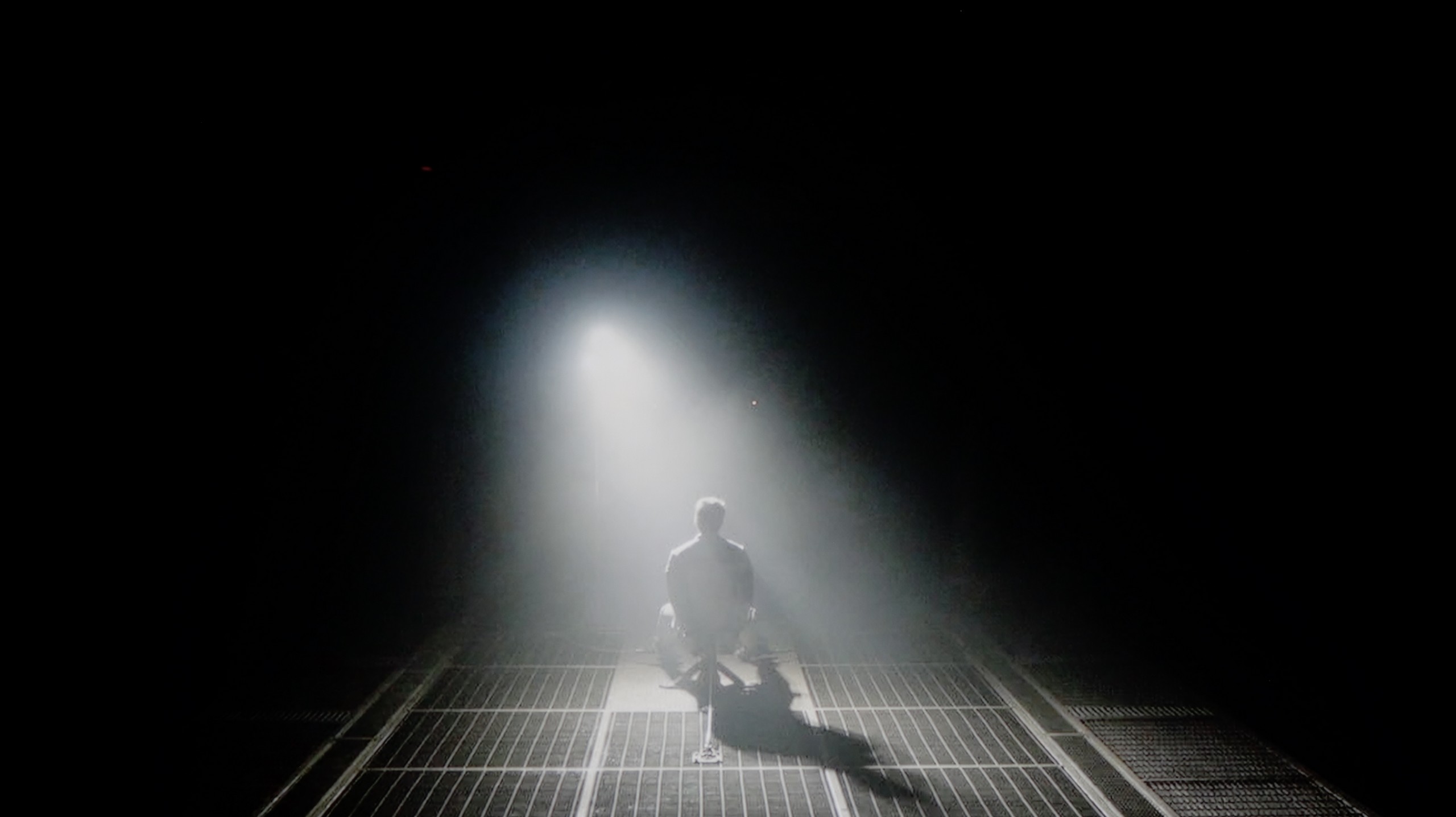
In the discussion about image quality, the conversation almost always begins with the issue of black depth and contrast, which are parameters that define the plasticity and realism of the observed world. Here, the TCL P7k/P79k immediately lays its strongest asset on the table – a VA panel. Its construction is what makes the native relation between the brightest and darkest parts of the image more than satisfactory, especially in the context of the price segment that this model represents. In the majority of scenes, the black achieved has a noble depth, which allows for building an engaging spectacle for the viewer. To illustrate the scale, it is worth mentioning that competing constructions based on IPS panels often offer results that are even four times, and sometimes five times, lower, which in direct comparison represents a chasm. Of course, when entering the territory of models oriented towards affordability, we must be aware of certain compromises. Therefore, we will not find an advanced local dimming system in the discussed television, which could further enhance the sense of contrast. However, the absence of this feature is fully understandable and constitutes a logical consequence of positioning the product in the market – this technology in TCL's portfolio for 2025 has been reserved for higher positioned, more prestigious series marked with the letter "C".
The 50-inch TCL C7K that we tested surprised us right from the start – it’s the smallest model in the series, yet it comes equipped with a VA panel with MiniLED backlighting and – attention – as many as 336 dimming zones. For comparison: many significantly larger televisions from higher tiers would be eager to boast such a number. Here we have it in the 50-inch version. Sounds promising, doesn’t it? So how does this translate into real movie-watching experiences? In the vast majority of tested scenes – very well. The contrast was high enough that it reached even six-digit values in measurements, which practically means very deep blacks and well-separated highlights. In scenes from films like The Revenant or Oblivion, the effect was impressive, matching the best LCD screens in this class.
However, not everything went perfectly. Despite the impressive number of zones, managing them was not always exemplary. In more complex scenes, where small light sources or a high level of detail appeared, the television had issues with the so-called halo effect (a glowing halo around bright objects) or overly aggressive dimming of the image. In such situations, contrast could either collapse due to overexposure of certain zones or, conversely – details in bright areas disappeared because the zones suppressed the light too much. Nonetheless, it is worth noting that in the vast majority of scenes, the contrast was more than satisfactory. And taking into account the size of the television and the price, the final effect will satisfy not just average users.
HDR effect quality
4.3/10
5.4/10
Luminance measurements in HDR:

Result
206 nit

Result
247 nit

Result
297 nit

Result
237 nit

Result
281 nit

Result
1051 nit

Result
185 nit

Result
454 nit

Result
200 nit

Result
836 nit
Scene from the movie “Pan” (about 2800 nits)


Scene from the movie “Billy Lynn” (about 1100 nits)


Static HDR10


Dynamic: Dolby Vision
Dynamic: Dolby Vision


HDR luminance chart:
TCL C7K / QM7K
HDR luminance
TCL P7K / P79K
HDR luminance
When turning to the assessment of HDR performance, we must be clear and without marketing embellishments: the P7K/P79K is not, and was never intended to be, a master in this field. The maximum peak brightness that this panel can generate hovers around a mere 300 nits. This represents a threshold, a kind of thin red line between what can be considered a barely satisfactory HDR signal and what is, in fact, not much different from standard dynamic range (SDR), unfortunately leaning towards the latter. Synthetic tests found brutal confirmation in reality – our measurements taken during movie screenings showed that luminance in key bright portions of the scenes rarely exceeded the ceiling of 200-250 nits. Thus, this is not a television that would allow content realised in a wide tonal range to spread its wings, and this must be openly admitted.
Unfortunately, the issue of colour reproduction is presented with equal restraint. Although the manufacturer positions this model within the "QLED" family, thanks to the use of a PFS LED filter, the results do not match the heightened expectations. The coverage of the wide DCI-P3 colour gamut reaches only 86%. In the context of the market, this is at best an average result, as most devices that employ additional layers to expand the colour spectrum easily achieve values at a minimum level of 90-92%.
TCL C7K is one of the brightest MiniLED televisions in its price range. Under the best testing conditions, the screen managed to achieve over 1200 nits, resulting in impressive, at times almost blindingly bright scenes. And most importantly – this is not just a theory based on measurements. In practice, the brightest parts of films can shine with true cinematic grandeur. Fans of home HDR cinema should be truly satisfied.
The impression is excellent, especially in scenes with large areas of brightness – a white sky, explosions, sun reflections, or magical sunsets can surprise with an intensity of light that is rarely seen in this price range.
However, it gets a bit worse when more challenging scenarios appear on the screen, as described when discussing contrast – that is, images full of details, with small, bright elements on a dark background. In such cases, the C7K often decides to preserve black levels at the expense of brightness. An example? Scenes from the films Sicario 2 or Life of Pi, where small light sources (like a distant lantern) can become less visible, and details in the lights are simply dimmed or blend into the background.
For many viewers, this may be an acceptable compromise – as we achieve deep black levels and a pleasing plasticity of the image. Nevertheless, it is worth being aware that the visibility of small details in bright areas is not this model's strongest suit. It is simply a technological limitation that still exists – even with over 300 zones.
Factory color reproduction
5.9/10
6/10
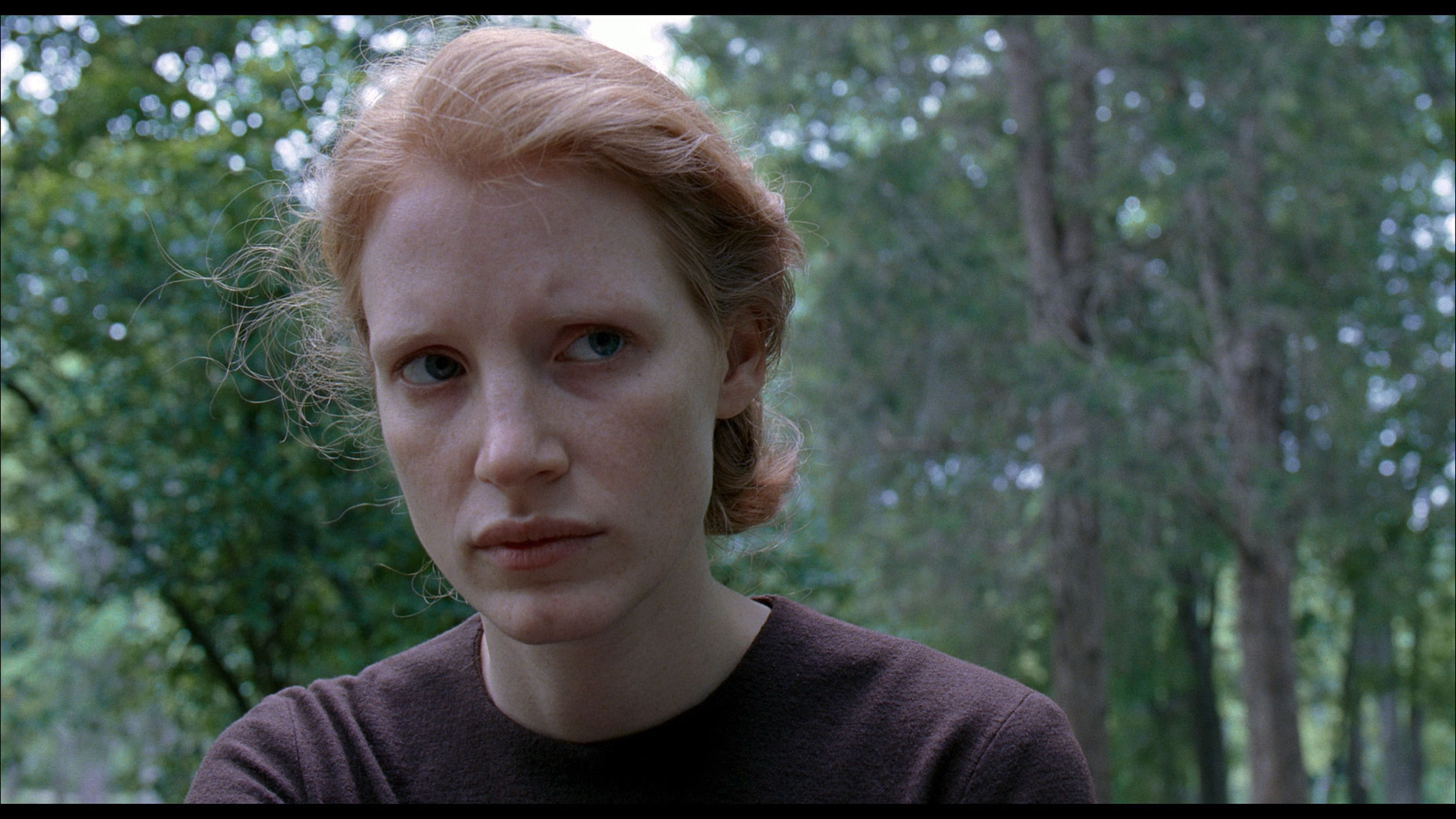
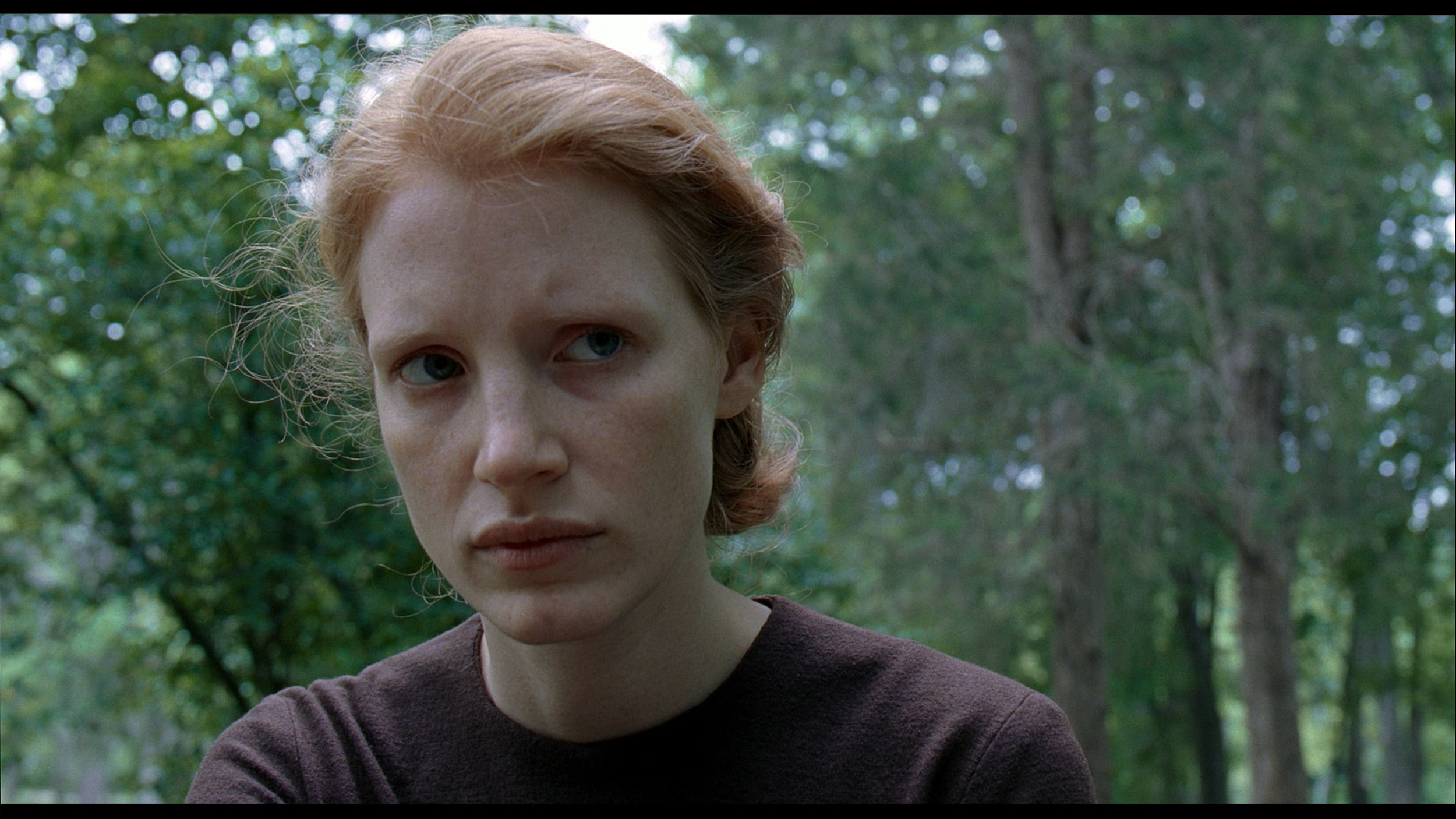
Factory Mode
After calibration
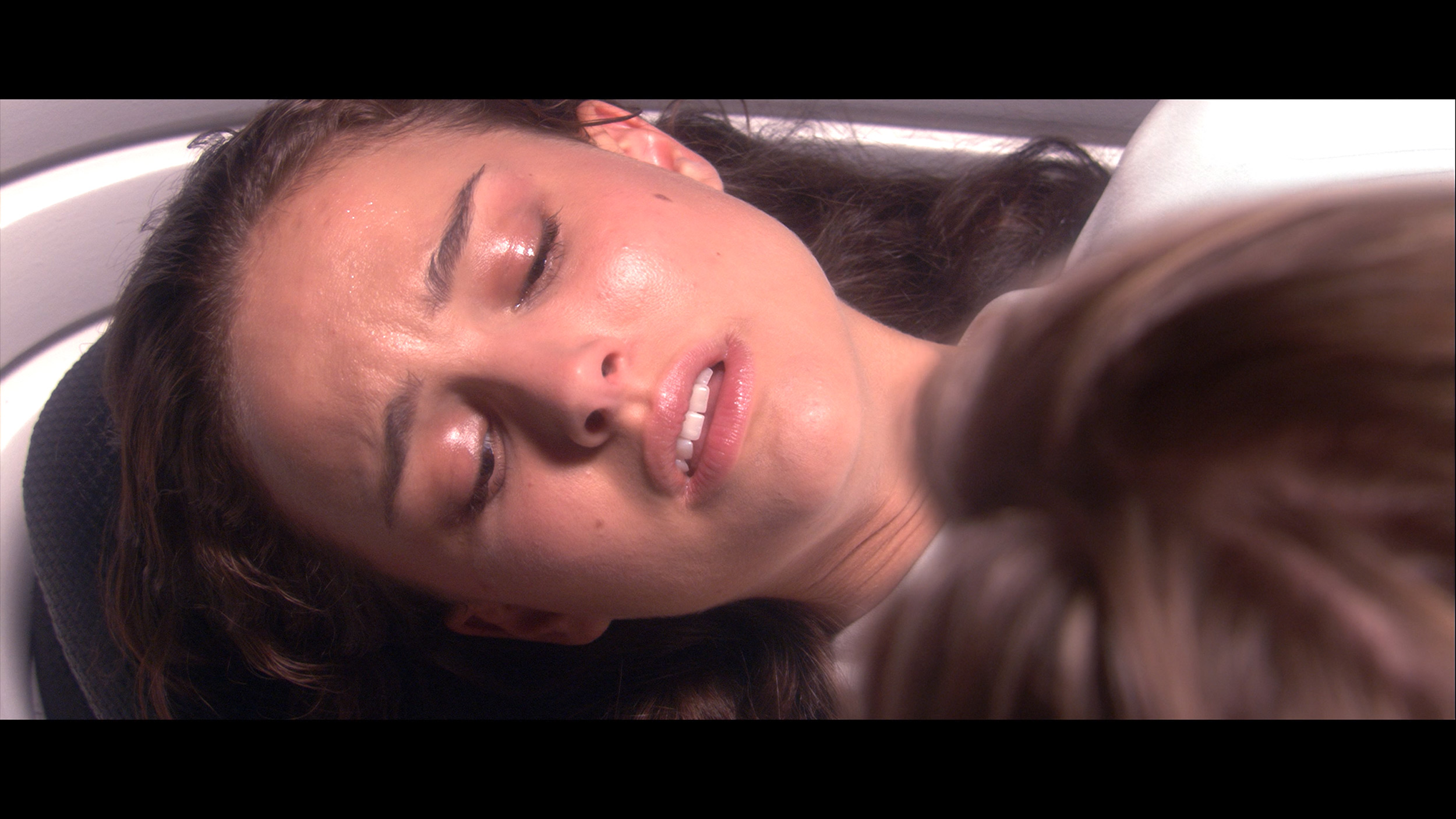
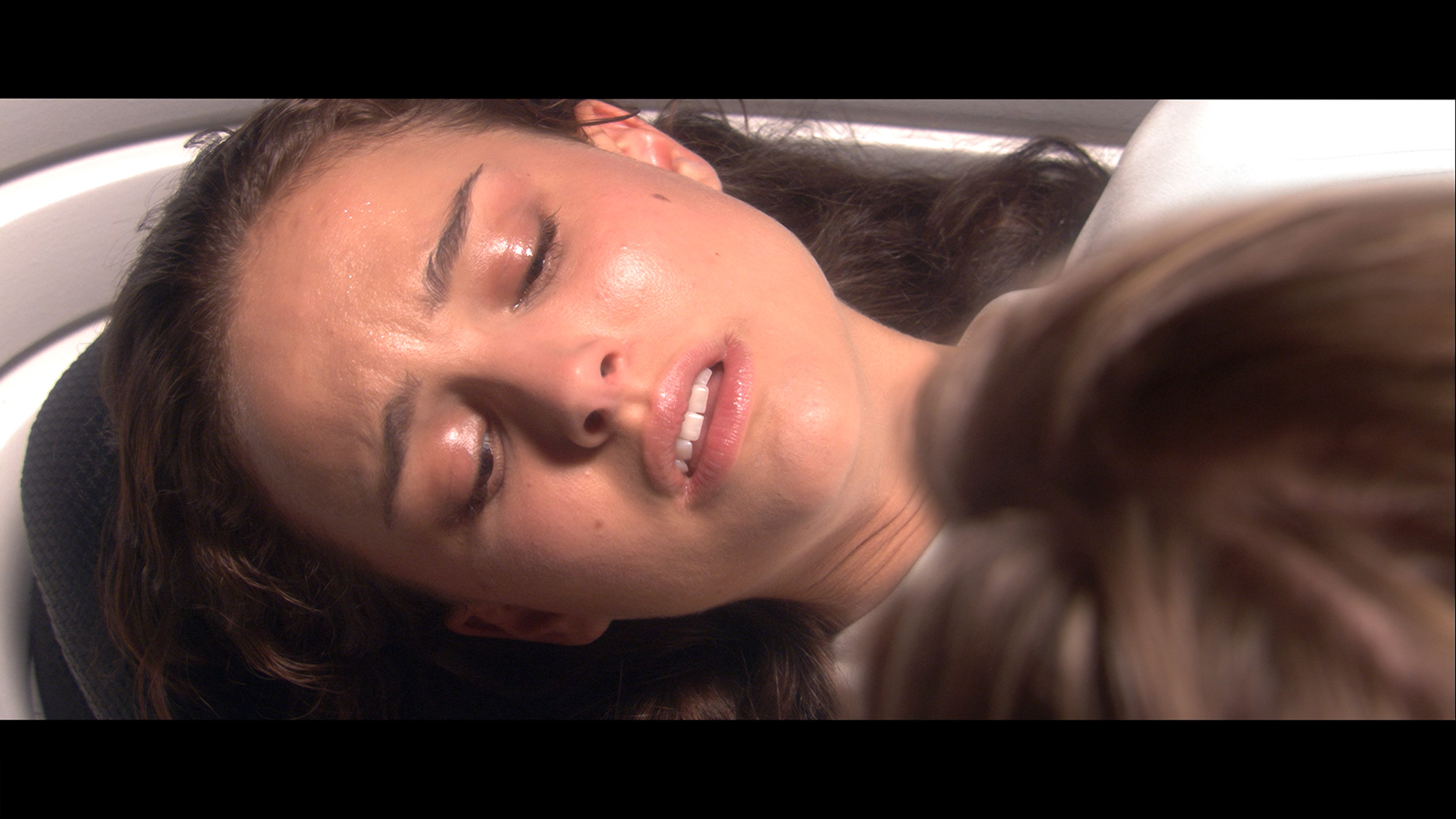
Factory Mode
After calibration
Every accurate assessment of image quality must begin with selection of the most optimal factory mode. In the case of the tested model P7K/P79K, the choice was made without hesitation for the "Film" mode. It is this mode that presents an image closest to the intentions of the creators, avoiding both the exaggerated brightness of the dynamic mode and the excessive dimming known from eco settings. And it must be admitted that, for a device in this price range, the factory calibration is surprisingly decent, although it has not escaped a few missteps. The most noticeable flaw turned out to be the not completely correctly set white balance. A slight dominance of the blue component gives the image a subtly cool, cold character, thus deviating from the exemplary neutrality that the director wanted to show us. The television performs much better in reproducing the greyscale in the standard dynamic range – the gamma curve is nearly exemplary. The only minor reservation could be made regarding the darkest parts of the image, where a slight deviation from the norm causes a loss of some detail in the shadows. The most serious challenge for the TCL software, however, was interpreting the HDR signal, as illustrated by the course of the EOTF curve. The television follows its own, quite free path here – the darkest details are disproportionately brightened, after which there is a noticeable slowdown in the increase of brightness for midtones. Fortunately, most of these imperfections are software-related issues that can be eliminated. With this thought in mind, we began the process of professional calibration.
A new feature in TCL televisions for 2025 is the long-awaited Filmmaker mode, which until now has been found in most competing brands. This is great news, as this mode is considered to be the truest to the original vision of the creators and is often recommended by enthusiasts of good picture quality. Unfortunately, as is often the case, the mere presence of this mode does not guarantee perfection. The Filmmaker mode in the TCL C7K is not without its flaws. There can be criticism of the incorrect white balance, particularly a slight dominance of blue, which resulted in cool, somewhat greyish skin tones. But that was not the biggest issue. The main complaint was the excessive brightness exposure, which is clearly visible on the gamma and EOTF graphs. The image was simply too bright, at times even blown out, which affected not only the texture of scenes but also the overall viewing experience. Some details were simply lost, and the entire image looked as if someone had slightly overcooked the brightness slider. As always, we decided to check what could be extracted from this after calibration. And that’s where it started to get really interesting…
Color reproduction after calibration
7/10
7.5/10




The calibration process turned out to be spot on, particularly in the context of standard dynamic range (SDR) content. We successfully mitigated the television's tendency to emphasize cool tones, restoring the whiteness to its natural neutrality. Moreover, precise adjustments allowed us to correct a slight error in the gamma curve, ensuring that the darkest parts of the image regained their proper depth, without any trace of unnatural brightness. The effects are measurable and impressive – in the ColorChecker test, the overwhelming majority of colour reproduction errors fell below the perceptual threshold, achieving a deltaE value of under 2. This is a result that pricier models would not be ashamed of. Unfortunately, when it comes to HDR content, we encounter a barrier in the form of the inherent limitations of the panel itself. And although we managed to bring the colours into line, the software's characteristics mean that the television still adapts brightness in its own way, as evidenced by the persistent, non-standard EOTF curve. In summary, calibration adds immense value, but one must be aware that it cannot overcome certain physical barriers. The slightly elevated black level, due to the lack of local dimming, along with limited peak brightness, means that HDR content may not always be able to showcase its full potential. This is simply not the primary task of this display; its true strength, especially after professional tuning, lies in the viewing of SDR material.
After calibration, the TCL C7K showcased itself in a really good light, especially when it comes to SDR content. We managed to precisely tune the white balance, colour gamut, and brightness characteristics to the point that colour errors on the ColorChecker palette dropped below a value of 2. For the uninitiated – this is nearly a perfect result, which means that the image is very close to what the creators intended. Unfortunately, the situation was worse with 4K HDR content. Although we managed to gently stabilize the white balance and correct its previous errors, it was still evident that the television has certain "MiniLED traits," especially in brightness management. When we checked how the C7K handled the EOTF curve on actual film scenes, rather than just on synthetic test patterns, it turned out that the screen still tends to slightly brighten the entire image. This impacts the overall experience – blacks lose some depth, and the image becomes less contrasty than it should be. Despite these minor shortcomings in HDR content, the overall reception of materials – especially in SDR – is truly very good. After calibration, the C7K can display an image that can compete successfully with much more expensive models. Good colour tuning, natural skin tones, and pleasant brightness make movie sessions and everyday viewing of content more than satisfactory.
Smoothness of tonal transitions
5/10
8.6/10




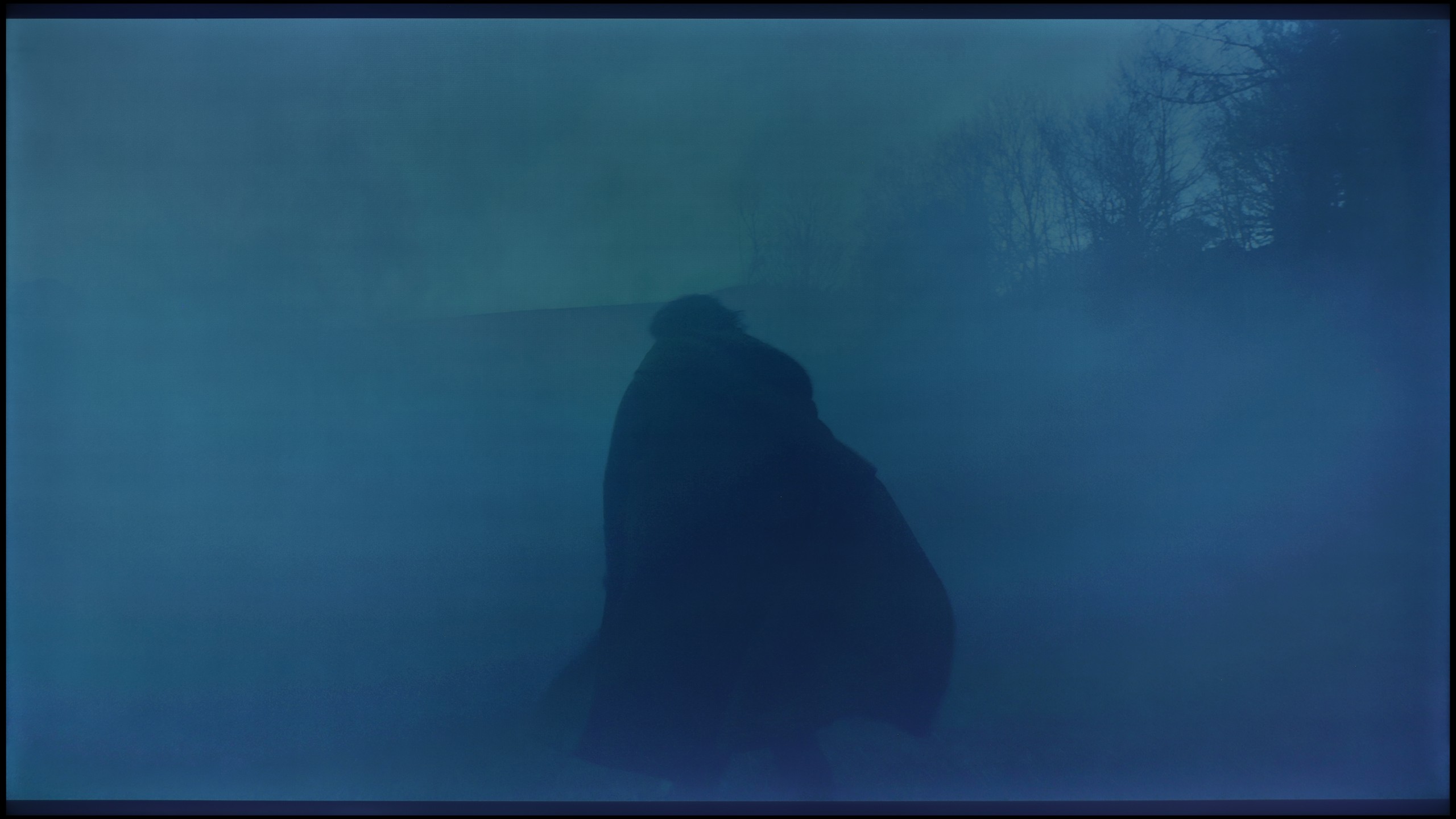
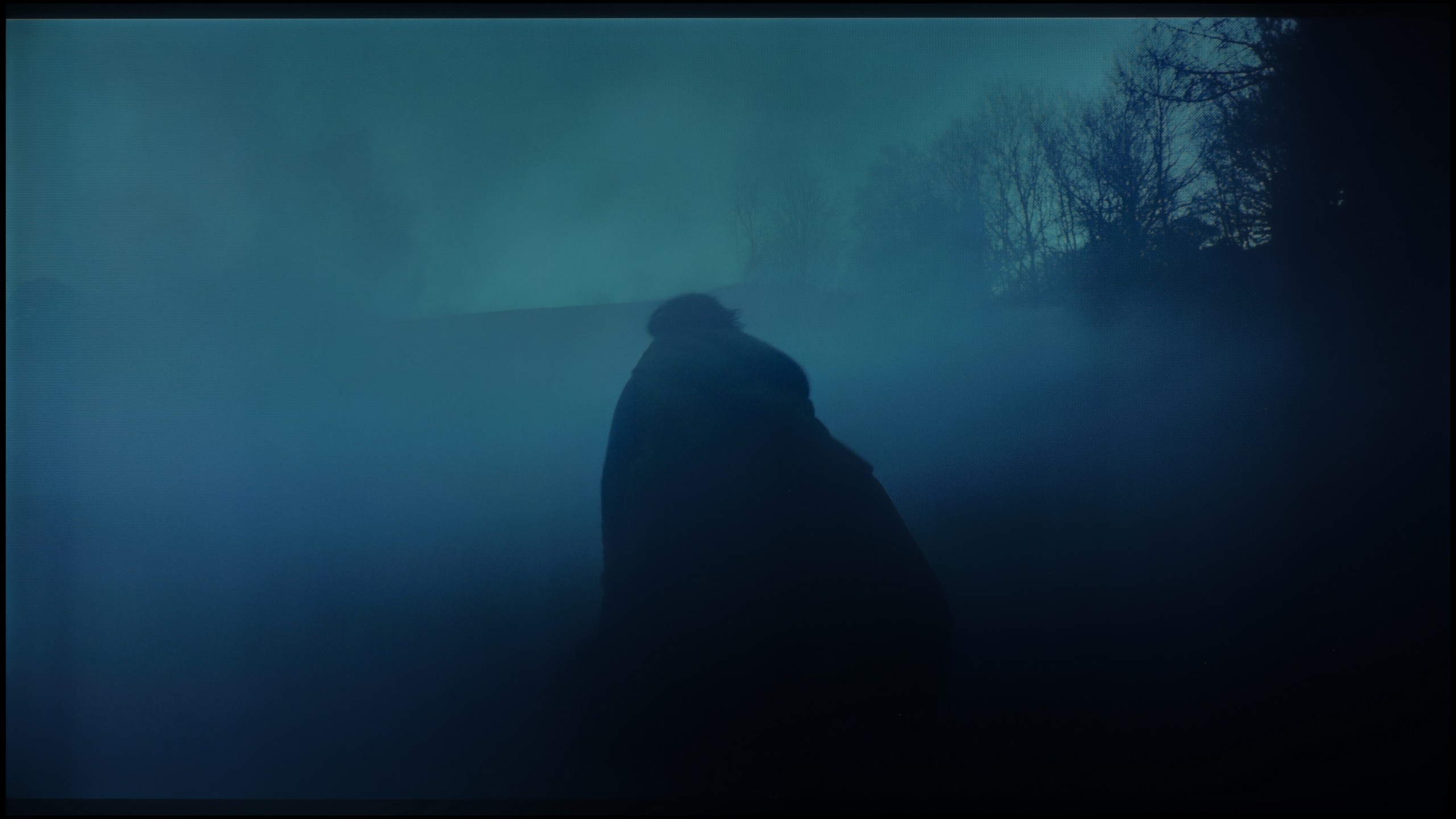






The issue of the fluidity of tonal transitions, or popular grading, is another area where the P7K / P79K evokes mixed feelings and surprises with its dual nature. If we were to evaluate solely its ability to render smooth colour gradients, we would undoubtedly give it a solid score of 8/10. Unfortunately, this positive image is marred by the use of very aggressive and unpleasant dithering. This artefact is particularly noticeable on demanding test patterns – such as the one depicting an actor submerged in red water – where rough, unnatural texture appears on uniform colour surfaces, betraying the digital nature of the image. This is all the more disappointing, as it is not a new issue. It seems to be a sort of inheritance from previous generations of budget TCL models, which is a pity, as it represents a flaw on what is fundamentally a quite competent image and is a mistake that could have been avoided.
The TCL C7K handles colour gradation very well – in most of the tested scenes, tonal transitions were smooth, and colours blended together without visible outlines or the artificial "blot" effect. In everyday use, it's hard to find anything to criticise – the picture looks natural, without annoying transitions or digital artifacts. Certain limitations only arise in very dark tones – particularly in a heavily muted grey palette, where the television may struggle to reproduce the ideal gradation. But this is absolutely understandable, as even many significantly more expensive models in this regard simply falter. Fortunately, these situations are rare and do not significantly impact the overall impression.
Image scaling and smoothness of tonal transitions
7/10
5.5/10
Smooth transition function

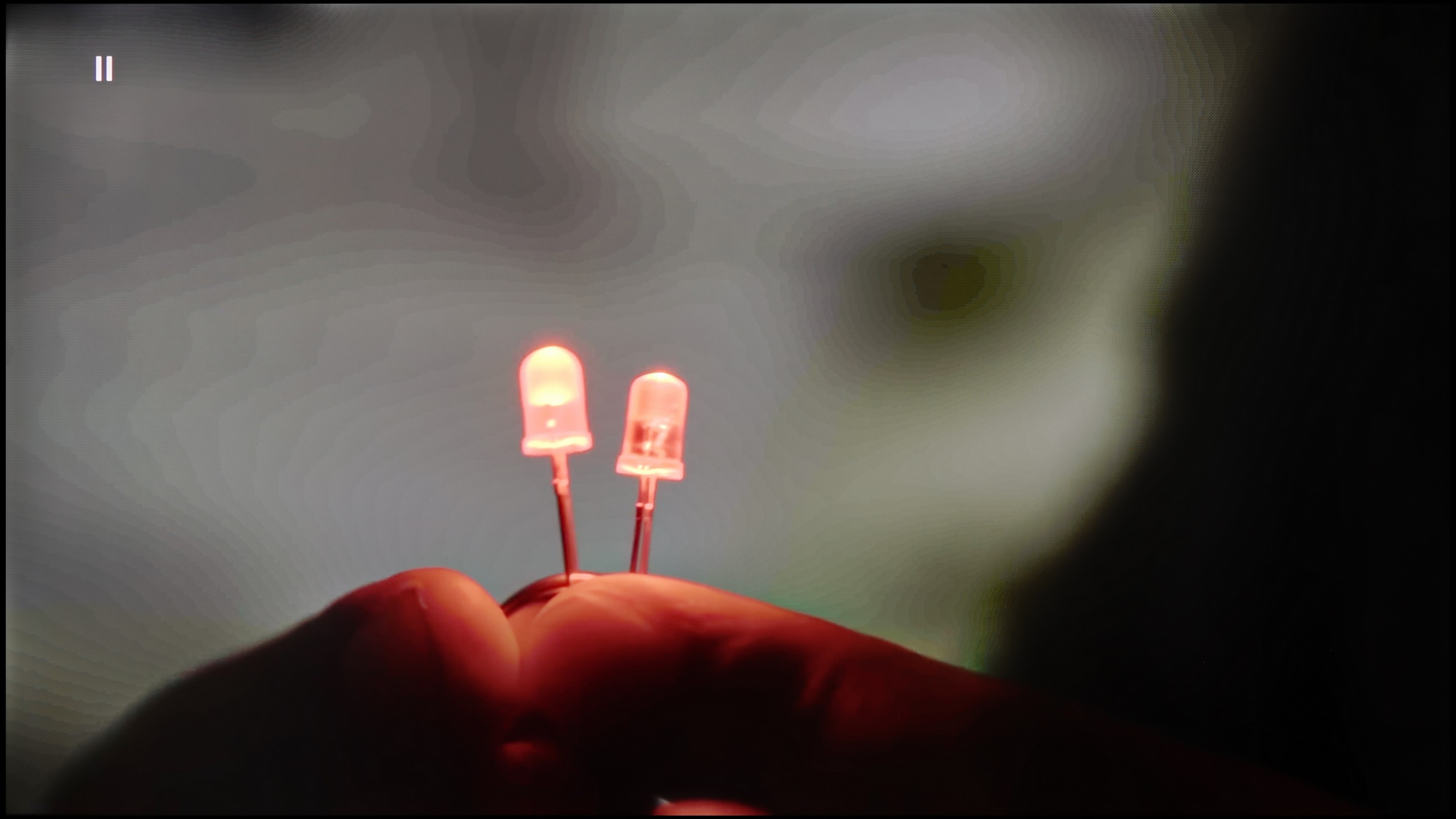
Image without overscan on the SD signal


After a series of harsh evaluations, fortunately, the time comes for praise, and this is due to the TCL AiPQ image processor for its work in the field of digital processing and content scaling. It should be noted right away that we are not talking about the level known from flagship designs; however, in the price segment represented by the P7K/P79K, the results achieved are more than solid. The feature for smoothing tonal transitions performs particularly well, effectively eliminating posterisation, which are the characteristic bands often visible in highly compressed materials, for example, from the ChooseTV service. The algorithm adeptly removes unwanted gradients, which ultimately looks really good. The television also handles upscaling competently, which is the task of elevating low-resolution materials to 4K standard. The resulting image, although it may initially seem a bit too sharp, fortunately, is not a problem. The software allows for free adjustment of this parameter using a sharpness slider, making it easy to customise the final appearance to personal preferences.
TCL C7K is equipped with a feature that, according to the manufacturer, is meant to smooth out unwanted colour transitions – a sort of rescue for less successful tonal shifts. It is called "Gradual Smoothing" and… well, it sounds ambitious, but in practice it works very poorly. Regardless of whether we set it to a low or high level, the difference is minimal. Worst of all, the feature can cut out elements from the picture that should be there. Fortunately, film grain remains untouched, so at least it doesn’t smooth everything indiscriminately, but still – it’s better to simply turn this option off.
When it comes to scaling lower resolution content, it is somewhat better. SD and HD materials look quite decent, although at times we had the impression that the image loses sharpness and becomes too soft – as if something took away its definition. Fortunately, with very low sources (e.g. 576p), there was no overscan effect, meaning the picture was not artificially cropped – everything fit on the screen as it should.
Blur and motion smoothness
4.8/10
8.1/10
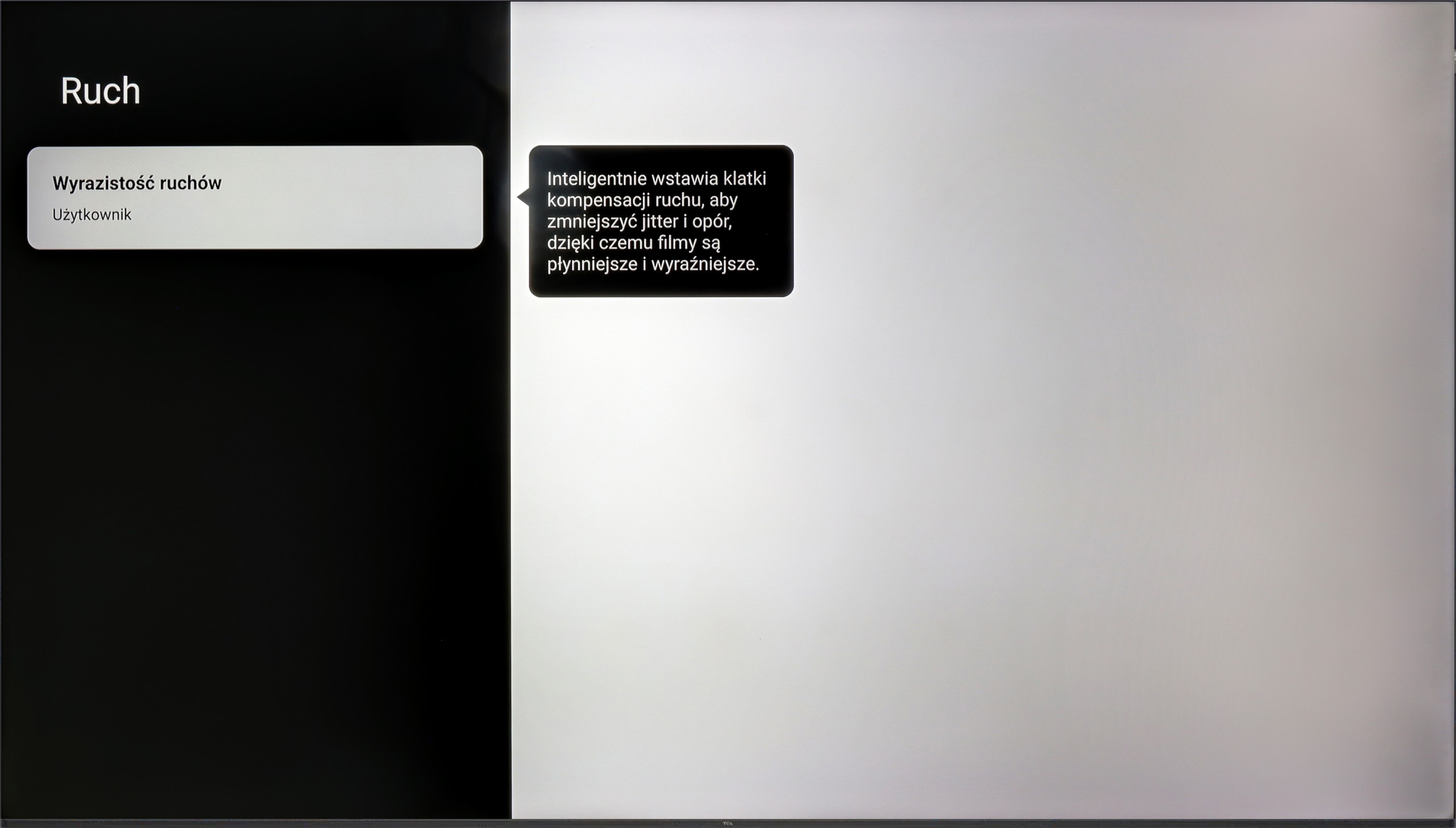
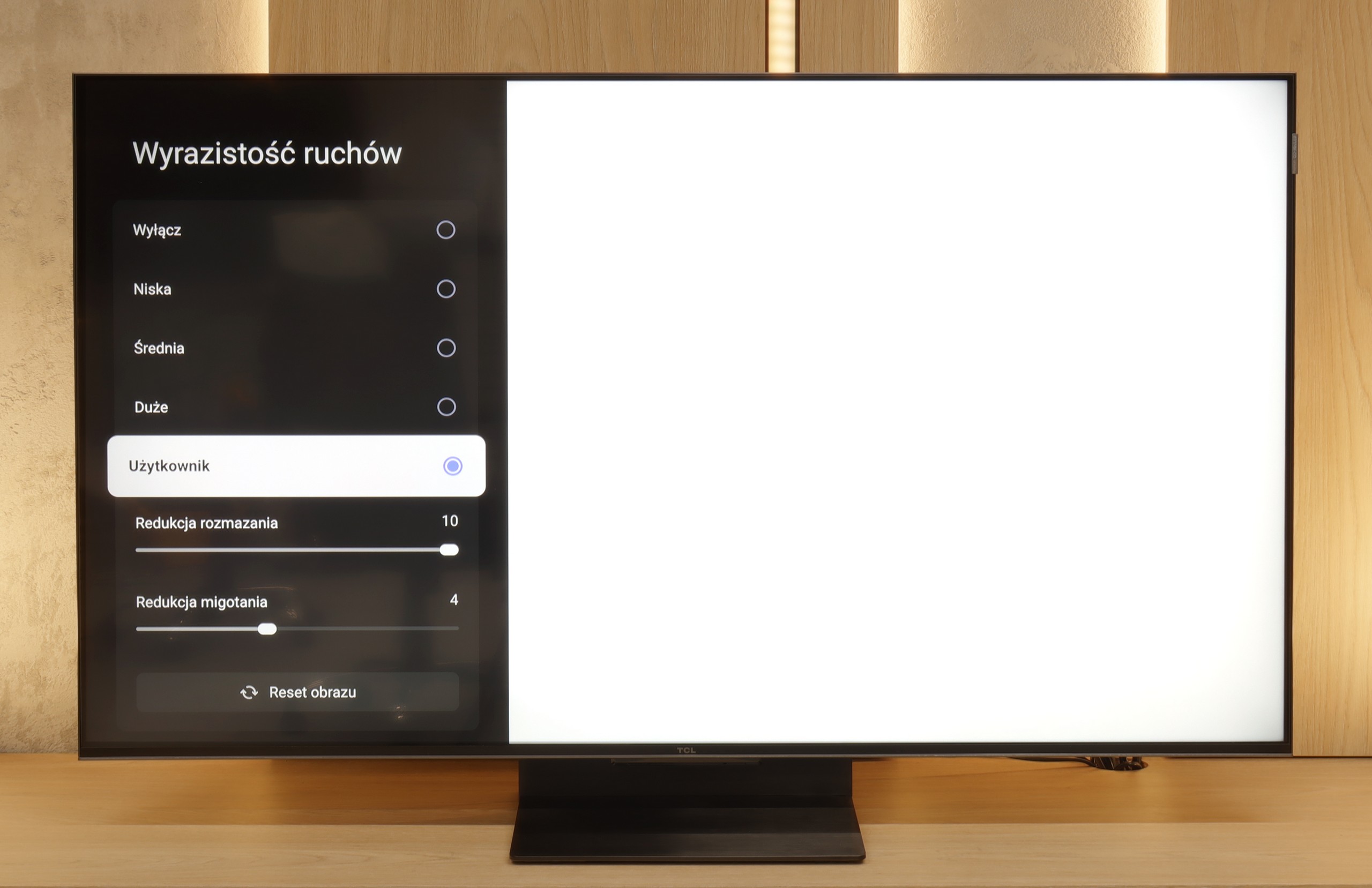
Blur (native resolution, maximum refresh rate):





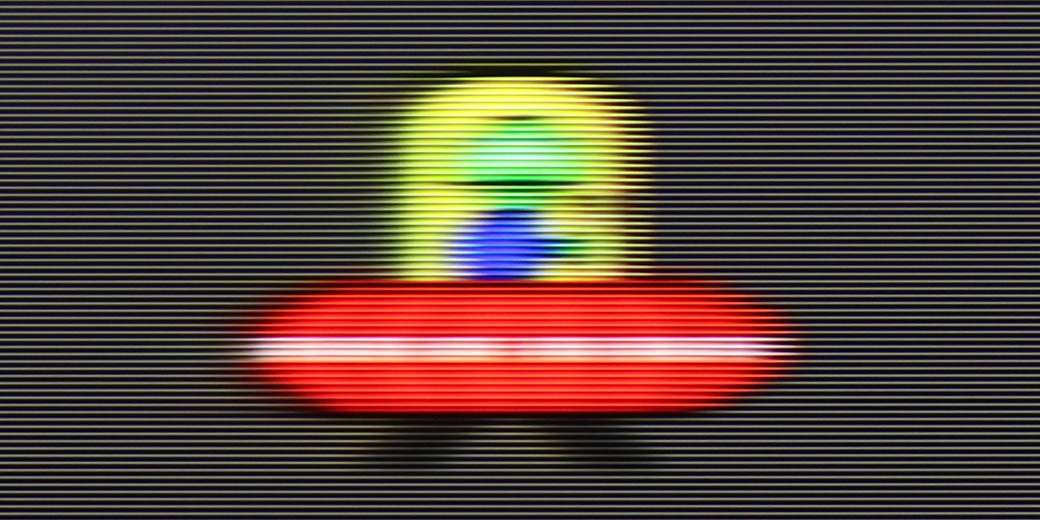
Blur (BFI function enabled):



Blur ():
Blur (4K 144Hz):



The issue of fluidity and sharpness of the image in motion is inextricably linked to a fundamental parameter of the matrix, and in the case of the TCL P7K/P79K, we are dealing with a panel with a native refresh rate of 60 Hz. This specification defines its capabilities from the outset and makes it difficult to unequivocally recommend it to enthusiasts of dynamic sports broadcasts. During fast camera movements, the image loses sharpness, and the panel also shows a slight tendency to smearing, which may be noticeable to more sensitive viewers. Fortunately, not everything in this aspect has been left to chance. The manufacturer has implemented a simple motion smoothing system, which is primarily used in film material recorded at 24 or 30 frames per second. Thanks to a dedicated slider, users can decide for themselves the final character of the motion – from maintaining a fully cinematic, slightly juddery image to achieving a very smooth, almost theatrical effect. It is a simple but effective tool that allows users to tailor the viewing experience to their own preferences.
The TCL C7K handles motion fluidity really very well. The matrix used in it offers a refresh rate of 144 Hz, which in itself suggests that this television is more than just a regular "60 Hz" panel. Furthermore – if we connect the C7K to a computer and set the resolution to Full HD. But we'll write more about this in the paragraph about gamers and PC collaboration. Returning to everyday use – both sports and films look very good here. Thanks to the fast panel and well-functioning motion smoothing, the C7K is great for watching matches, but also for movie screenings. In the menu, we find two sliders – motion blur reduction and flicker reduction – which allow us to adjust the fluidity effect to our own preferences. At lower settings, we get a more cinematic effect, with slight stuttering motion. At higher settings – the picture becomes more theatrical, fluid to the point of excess. Everyone has their own preferences – anyone can set it to their liking.
Console compatibility and gaming features
6.7/10
9.8/10
- ALLM
- VRR
- VRR range48 - 120Hz48 - 144Hz
- Dolby Vision Game Mode
- Correct implementation of HGIG
- 1080p@120Hz
- 1440p@120Hz
- 4K@120Hz
- Game bar
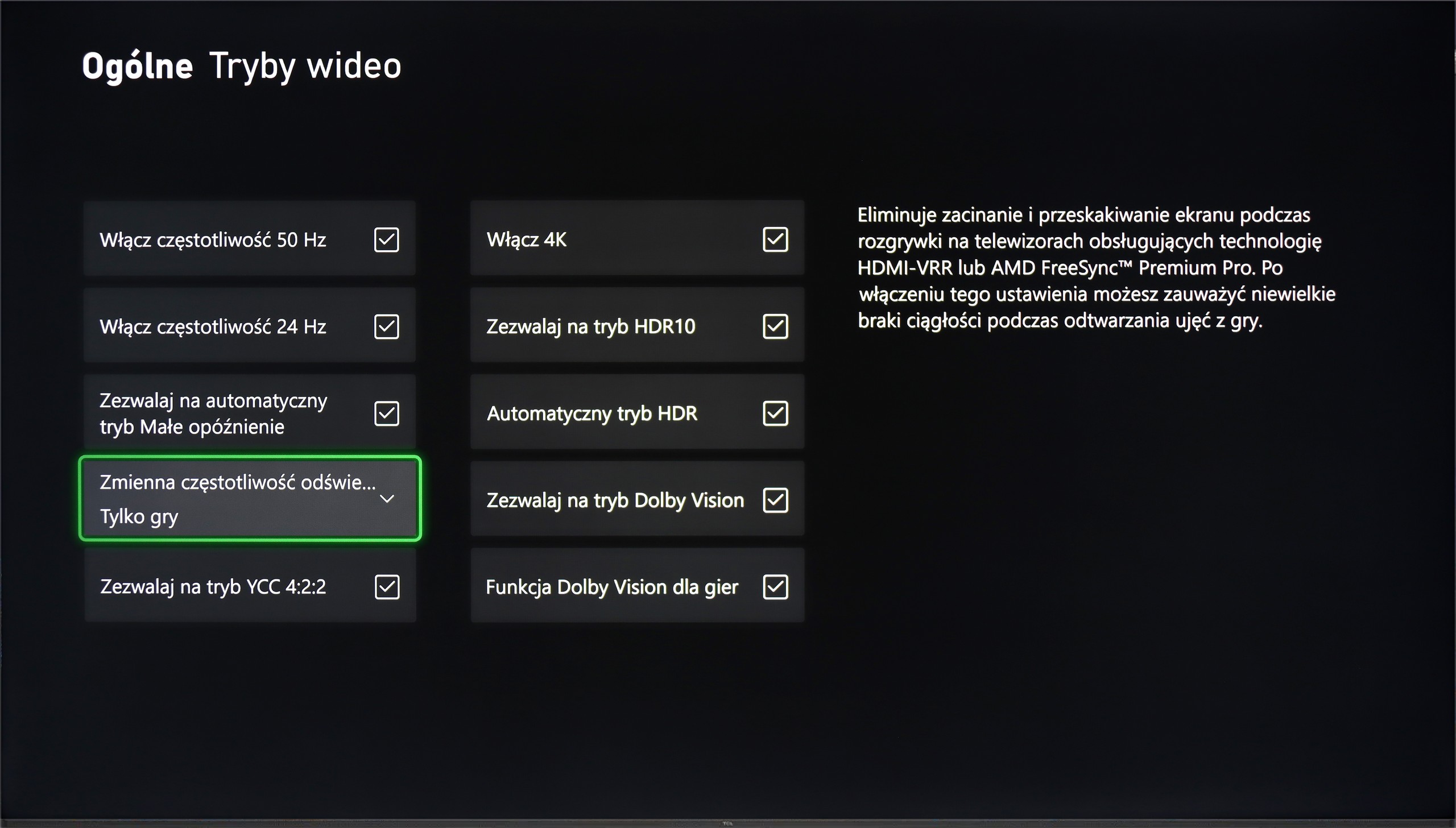
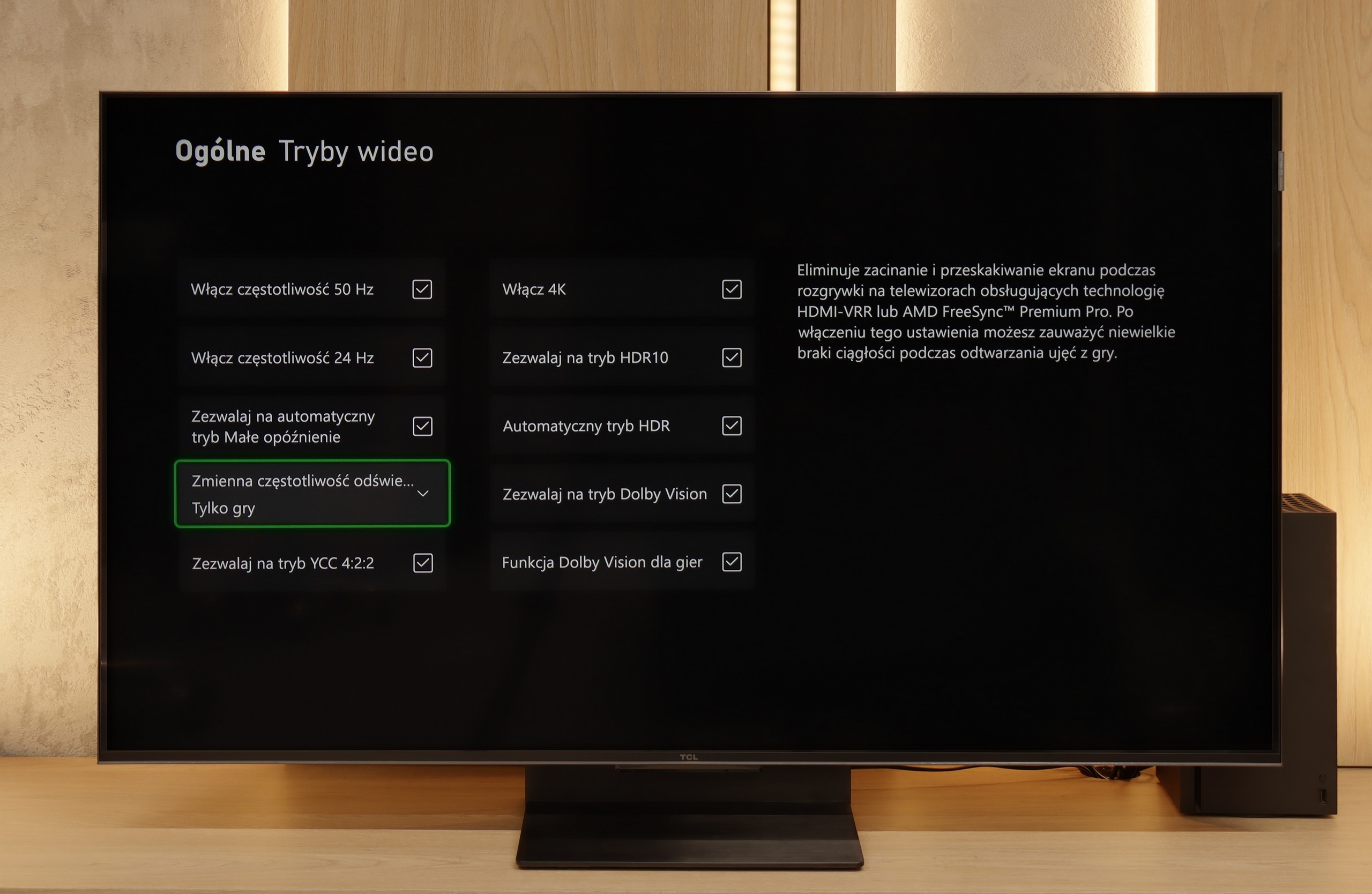
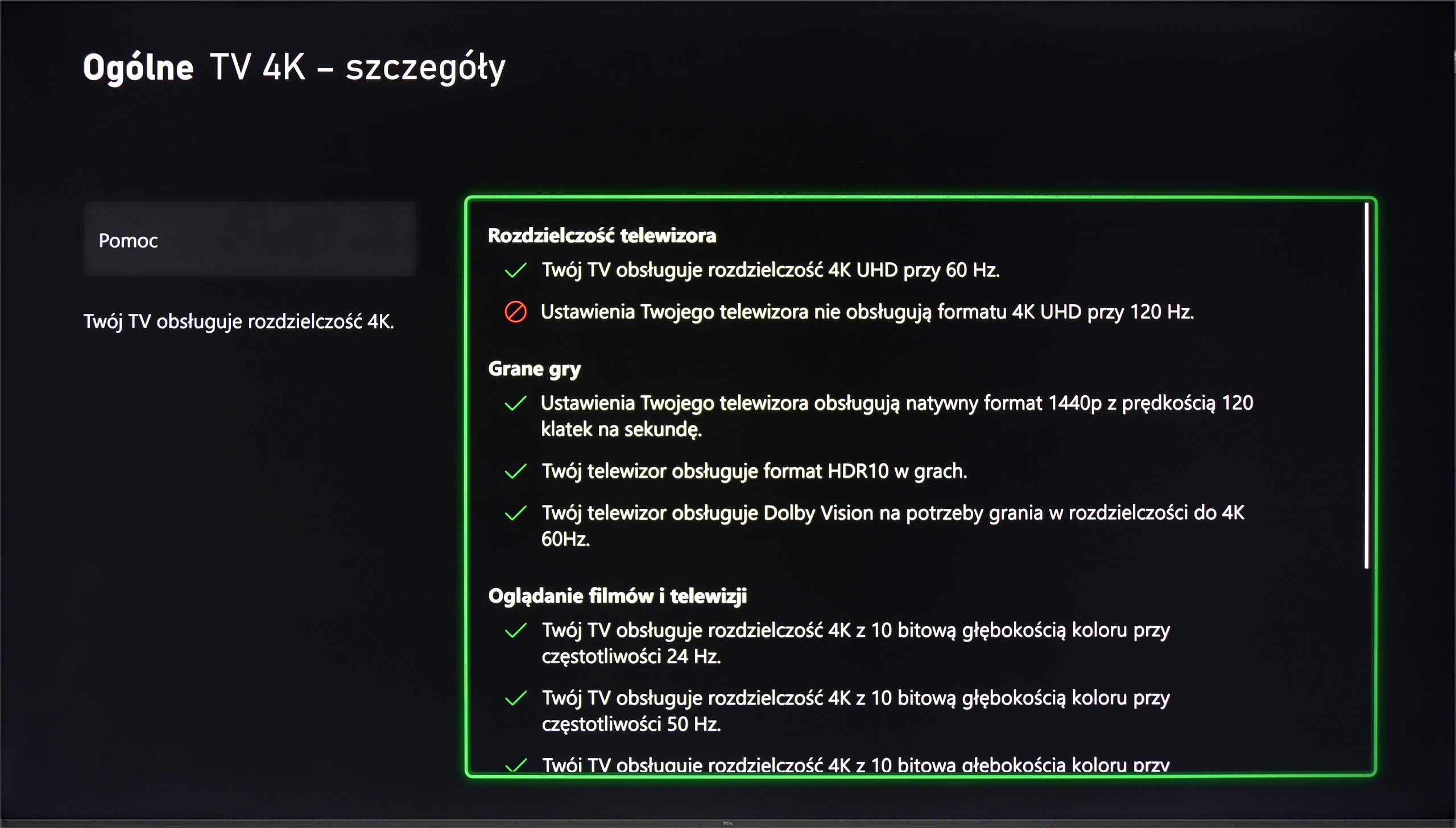
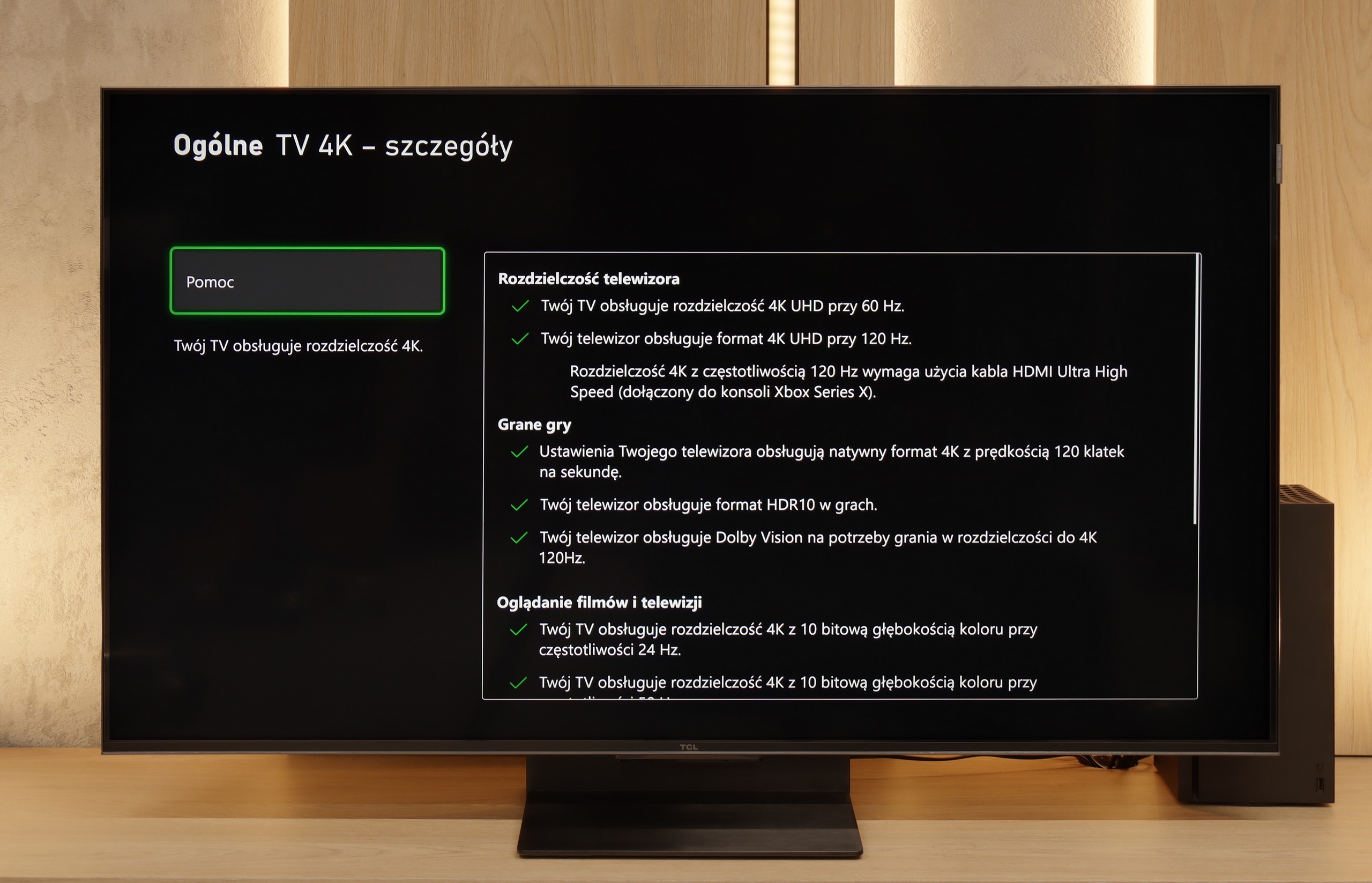
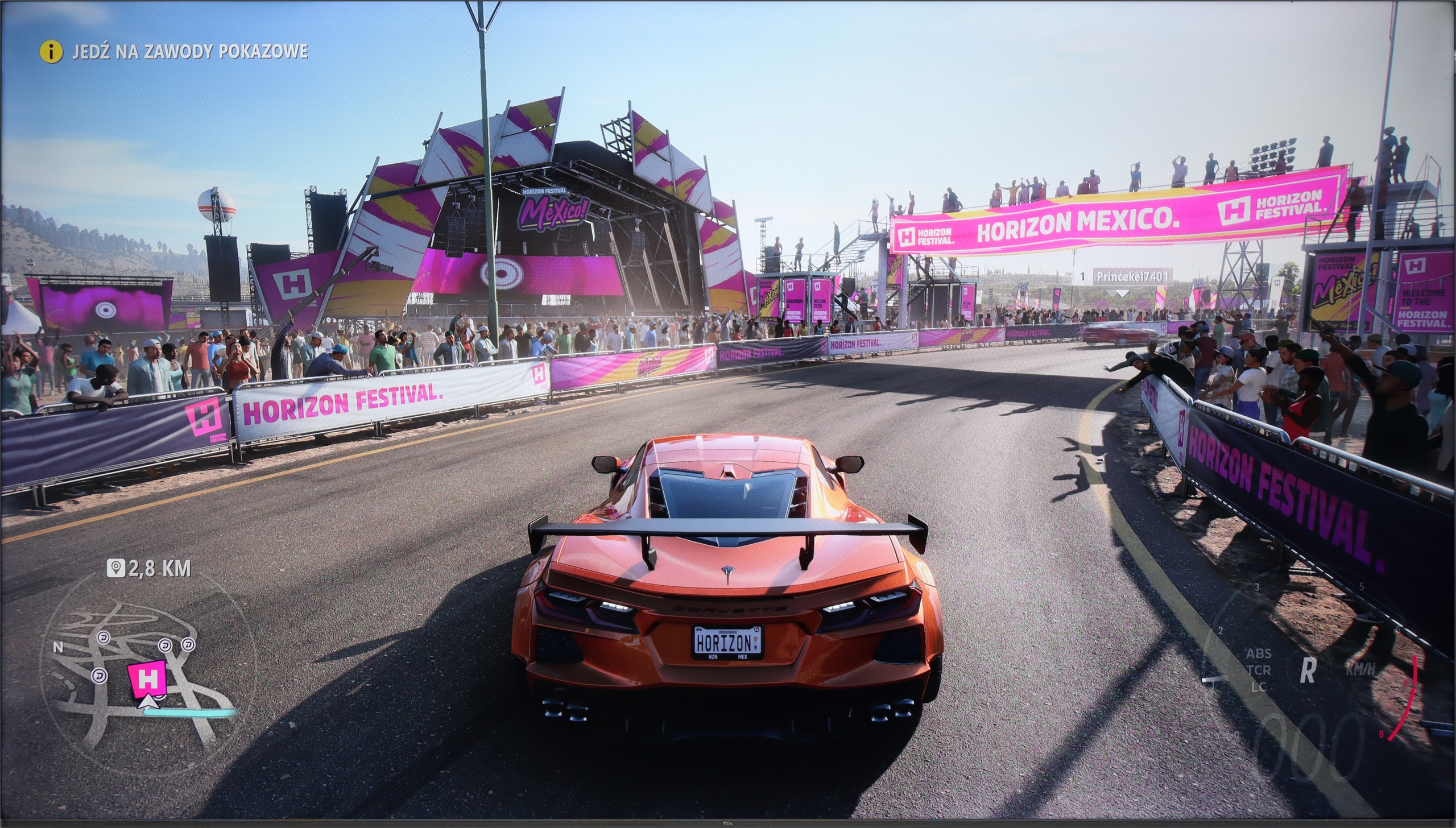
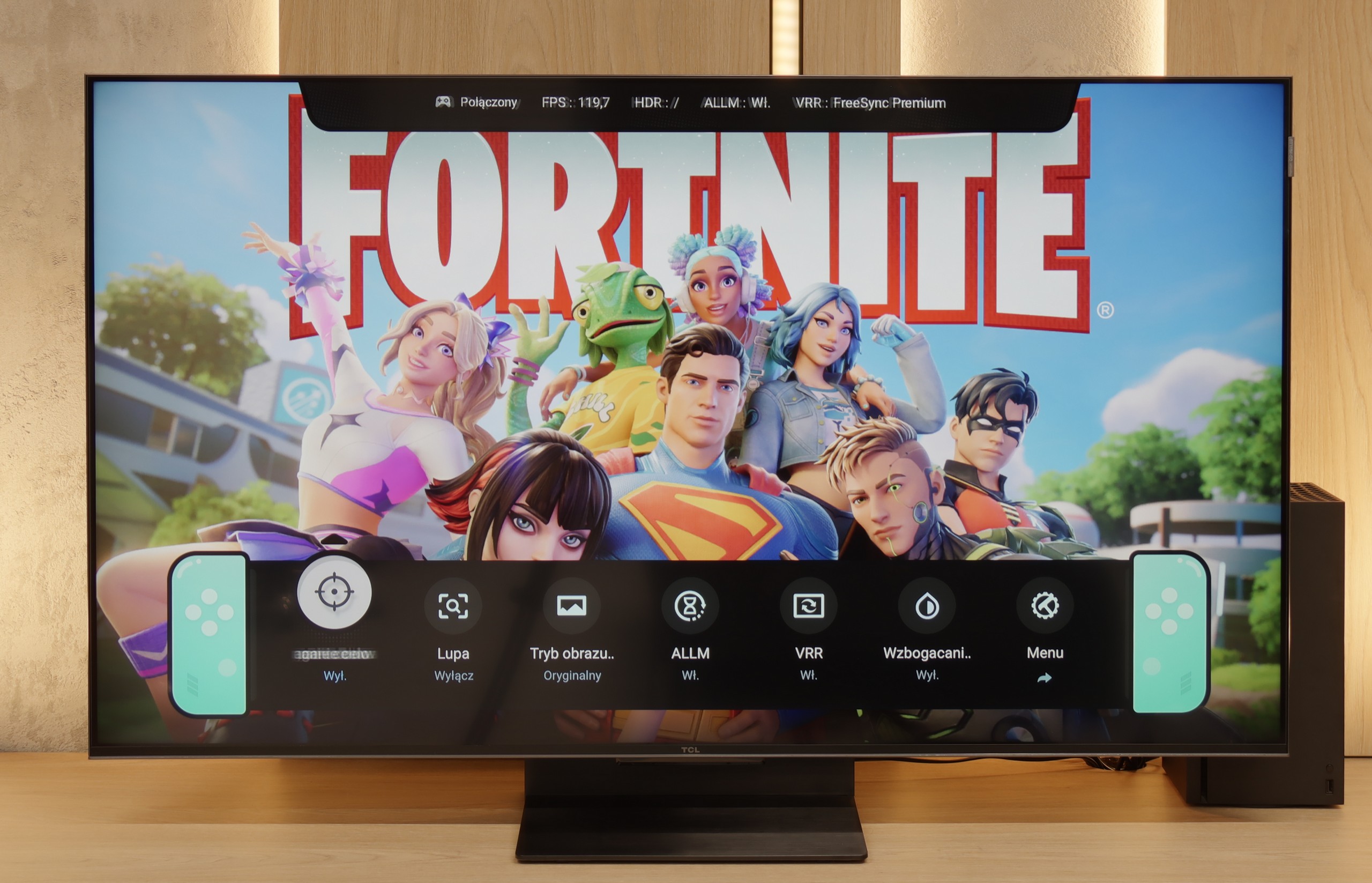
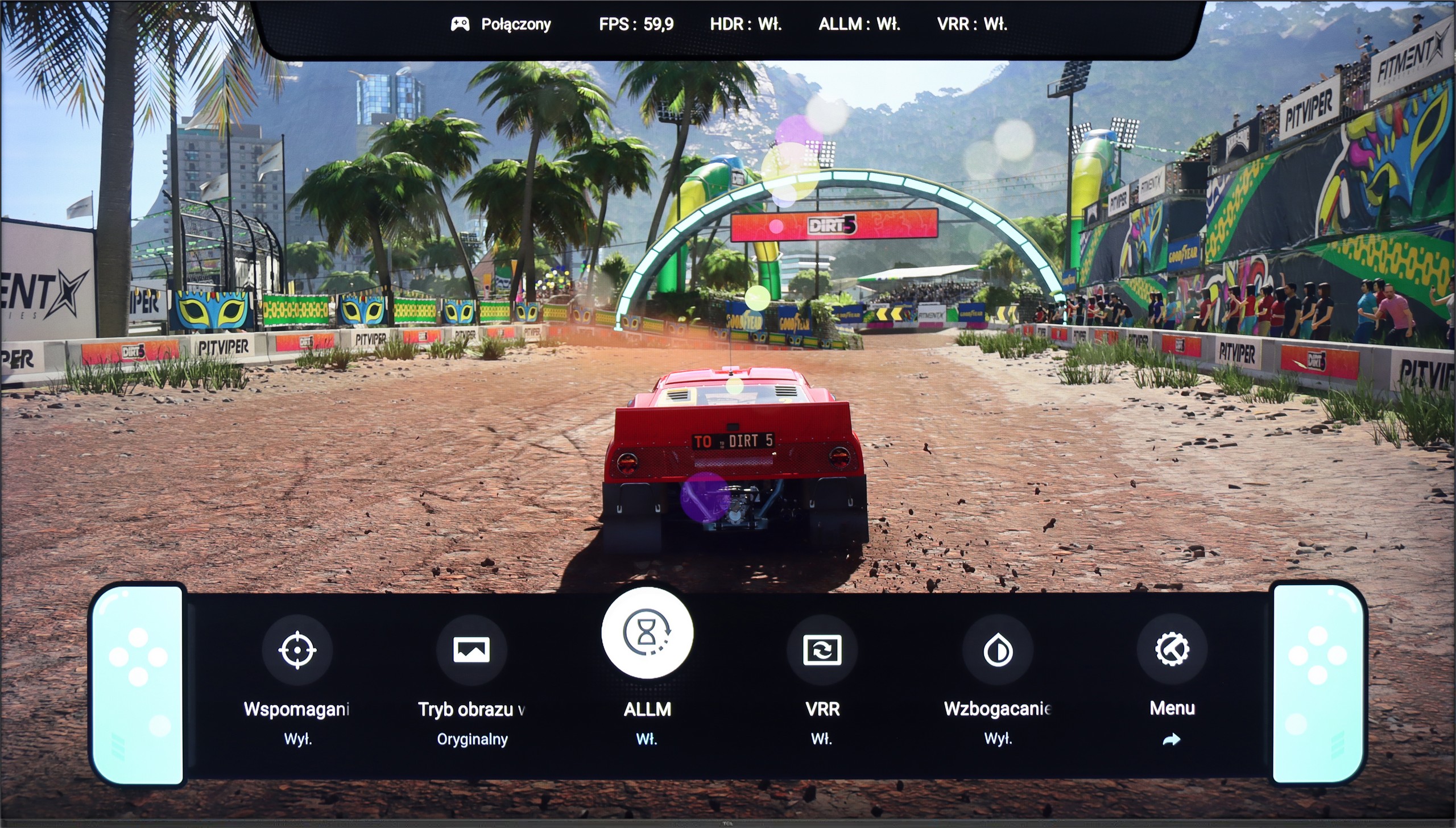
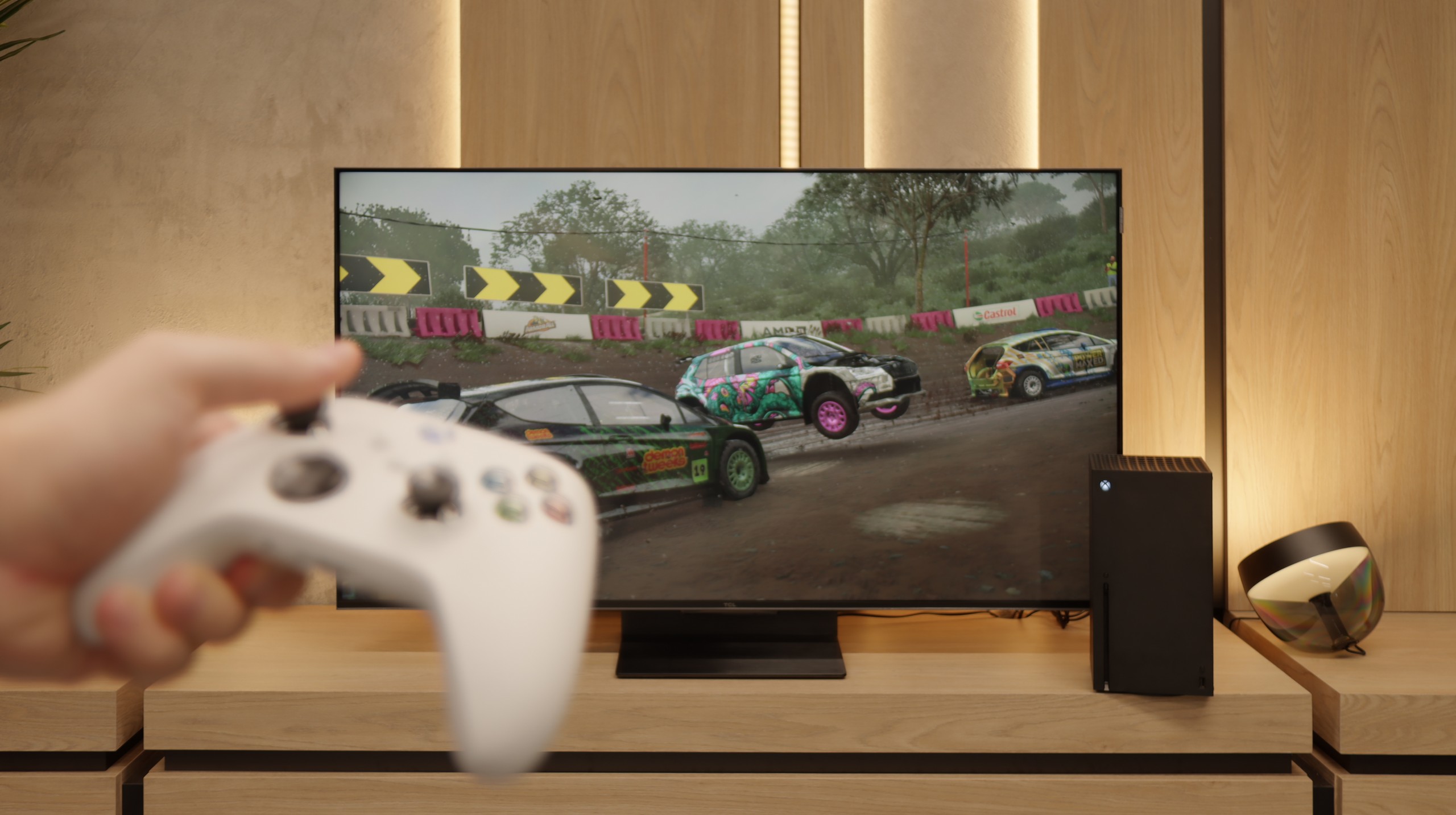
Although on paper the native 4K@60Hz panel might suggest that the TCL P7K/P79K is not a television tailored for gamers, the reality is surprisingly different. On the contrary, the manufacturer has ensured a rich package of features that make it a very friendly companion for next-generation consoles. Onboard, we find key technologies such as ALLM, which provides automatic switching to low latency mode, and VRR, or variable refresh rate, which eliminates screen tearing. The list is complemented by support for Dolby Vision Gaming and a simple yet functional Game Bar. However, the real and extremely pleasant surprise is something else. It turns out that the television easily supports a high refresh rate signal of 120 Hz but at lower resolutions – 1080p and 1440p. This is fantastic news for console owners, who know well how rarely games run in native 4K at a full 120 frames per second. The ability to choose between higher resolution and doubled smoothness is therefore an extremely sensible compromise.
In summary, although the P7K/P79K may not be the target screen for the most passionate tournament players, for the casual or occasional console user, it offers a package of options that is hard to find among many competitors at this price.
The TCL C7K is a television that on paper appears to be the dream equipment for gamers – and most importantly, it holds up in practice too. To start with good news: there are two full-bandwidth HDMI 2.1 ports, so we can easily connect both a console and a computer, taking advantage of all their capabilities. The panel itself supports a refresh rate of 144 Hz, which gives a significant advantage in dynamic games. There is also a complete set of gaming features: VRR (variable refresh rate), ALLM (automatic low-latency mode), and support for Dolby Vision in games. There is also the HGiG mode, which allows for HDR effects consistent with the creators' intentions. GameBar, an information bar for gamers. It works quickly, looks clear (like a Nintendo console👌), and shows what matters most: the current frame rate, VRR status, and even HDR parameters.
Input lag
9.9/10
9.7/10
SDR
HDR
Dolby Vision
Complementing this rich package for gamers is a parameter that has a direct impact on comfort and performance in gameplay – input lag. Already in native 60 Hz mode, the television boasts an excellent result of just 15 ms. However, the real magic happens when switching to 120 Hz mode, where the lag drops nearly by half, reaching values below 10 ms. Such responsiveness ensures that every command from the controller is translated to the screen in the blink of an eye, which will be appreciated not only by professionals but by anyone who values smooth and direct interaction with the game.
When it comes to delays, the C7K gives no reason for complaints. In games at 120 Hz, input lag is around 10 ms, which means the television responds really quickly. And interestingly – even in Dolby Vision mode, the result is very similar, which is not always the standard. Good job, TCL. At 60 Hz, the lag does increase a bit, but that's completely normal and affects virtually every television with a refresh rate of 120Hz and above. The most important thing is that everything still runs smoothly and there’s no feeling that something is not responding to our actions.
Compatibility with PC
2/10
8.4/10
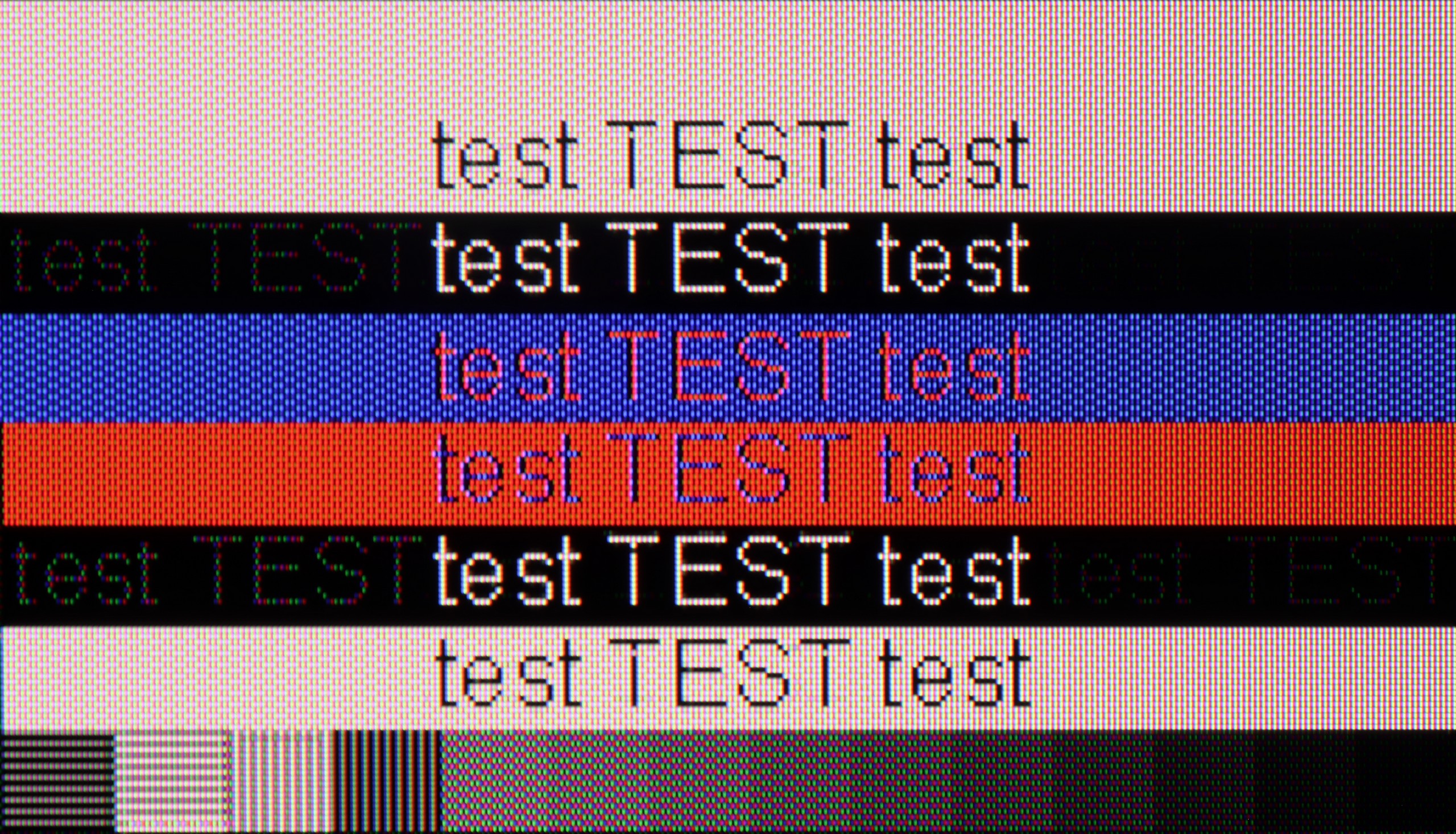
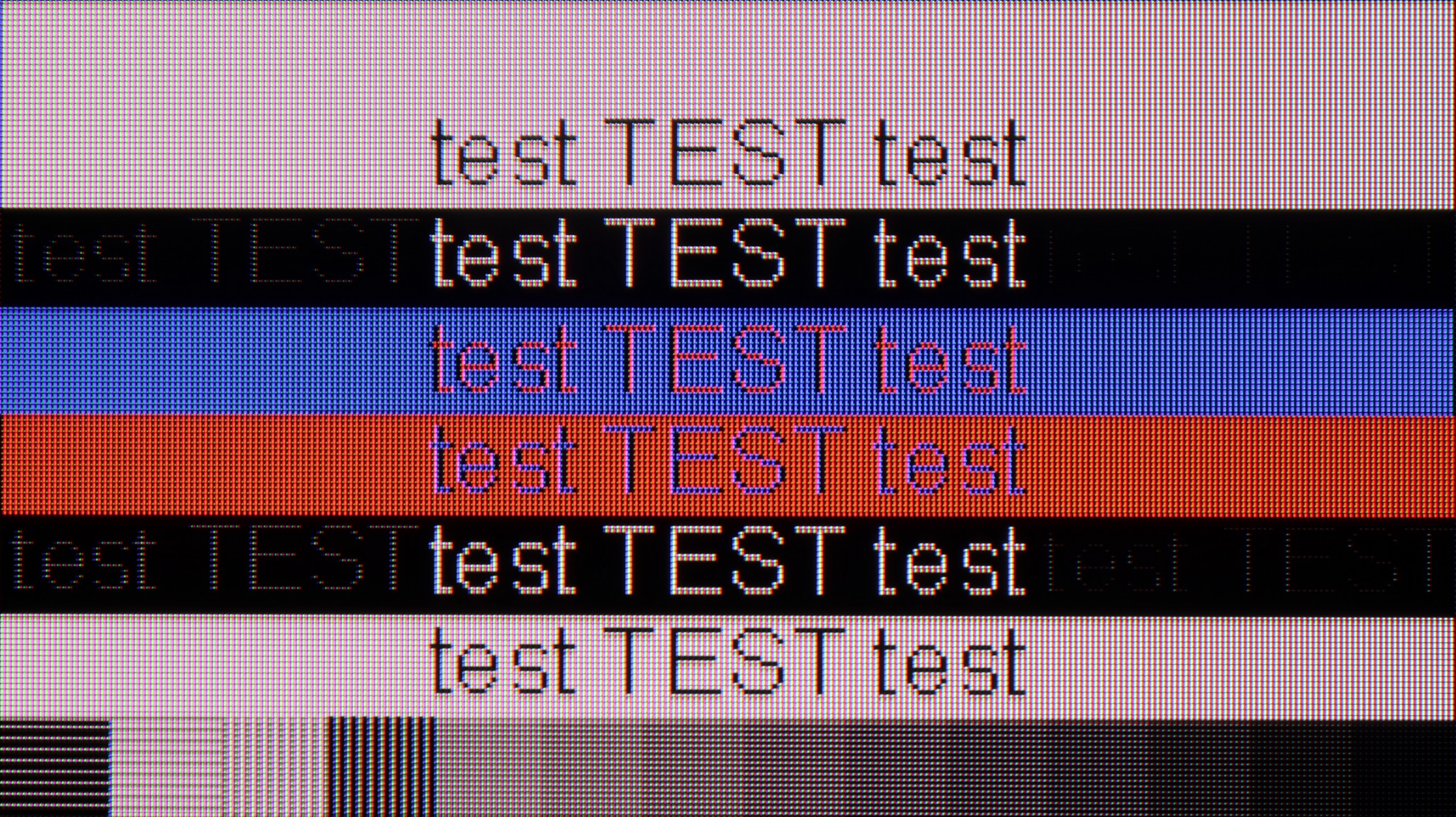
We finally come to an area that can undoubtedly be described as the biggest Achilles' heel of the TCL P7K/P79K – its compatibility with PC. It is paradoxical in that, on paper, everything looks promising. The presence of G-Sync and support for high refresh rates at lower resolutions might suggest that it would also be a great monitor. Unfortunately, practice brutally verifies these assumptions. The key issue is the lack of support for full 4:4:4 chroma sampling. In everyday use, this translates to terrible font rendering quality – these, especially the coloured ones, become jagged, surrounded by artefacts, and simply poorly legible. This is not the end of the story, as in PC mode, the problem of aggressive dithering also becomes evident, giving the entire image an artificial, overly digital appearance. The only consolation in this situation is the fact that in games we can take advantage of the additional hertz and G-Sync technology, but these are not advantages that could compensate for the fundamental deficiencies in displaying a static interface. The verdict is therefore clear: while as a screen solely for gaming on PC it might still hold its own, as a monitor for work or browsing the internet, the P7K/P79K simply performs poorly.
If we are going to connect the C7K to a computer – especially for gaming – there is definitely a lot to play for. We have 4K at 144 Hz, which already sounds great, but if we lower the resolution, the television can even display up to 280 Hz. In e-sports, where every fraction of a second counts, this really makes a difference. On top of that, there is support for G-Sync and FreeSync, so regardless of which graphics card we have – the image will be smooth, without any stuttering or tearing.
However, if we plan to place the C7K on a desk and use it like a monitor, it’s a bit less "rosy." Yes, it supports chroma 4:4:4, so fonts should be sharp, but with very dark letters, there is slight blurriness and dimming of the edges. This is not something that immediately stands out during gaming or watching, but when working with text – it can be distracting. In everyday use – it’s probably nothing to worry about, but if we plan to place a 50-inch screen a meter from our face, it’s worth keeping this in mind.
Viewing angles
3.2/10
3/10
When it comes to viewing angles, we enter the territory where VA panel technology dictates unavoidable conditions. As expected, this is the weak point of this model. It is enough to move away from the screen axis to observe a gradual degradation of the image: colours begin to fade, contrast noticeably drops, and black loses its depth. In direct comparison with IPS panels, which are renowned for their generosity in this aspect, the VA panel must concede superiority to its competitor. Is there any upside to this? Paradoxically, yes. Poor viewing angles are, after all, the price we consciously pay for the fundamental advantage of this technology – a significantly higher native contrast and deeper blacks when viewed head-on. Thus, it can be said that this is a television that favours viewers sitting in the 'ideal' spot, offering them a maximally vibrant image at the cost of versatility.
There are no surprises here – the C7K has classic viewing angles for a VA panel. That is: sitting directly in front – it’s excellent. The colours look good, the contrast is strong, everything is in place. But just shifting slightly to the side and it starts to get worse – the image loses saturation, blacks turn grey, and the overall impression diminishes a bit. So, if we plan to watch together with a few people or have a sofa that takes up half the living room – it’s worth seating everyone a bit more centrally. You can watch from the side, but don’t expect miracles – it’s simply a characteristic of VA panels.
Daytime performance
4.6/10
6.1/10
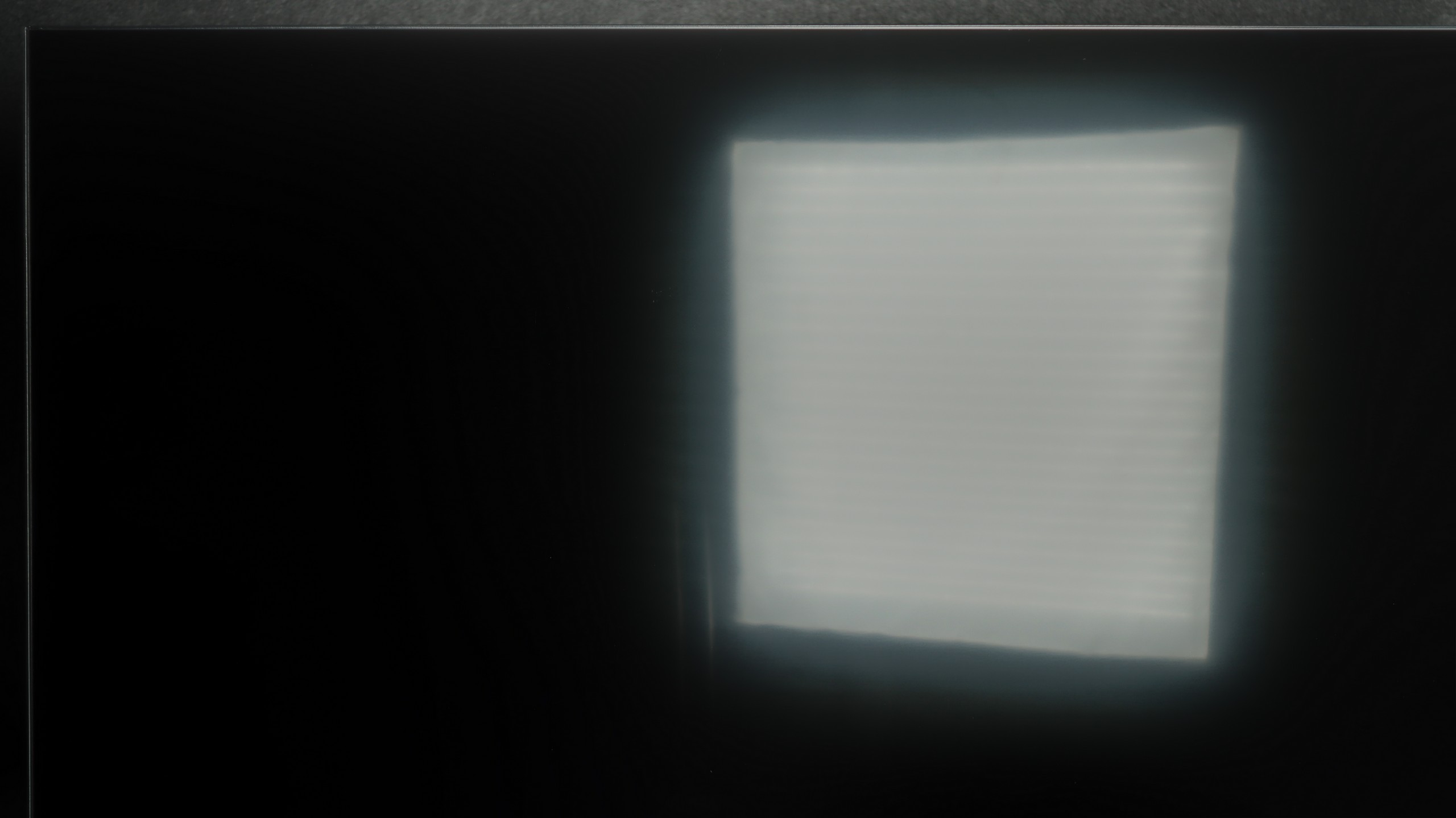
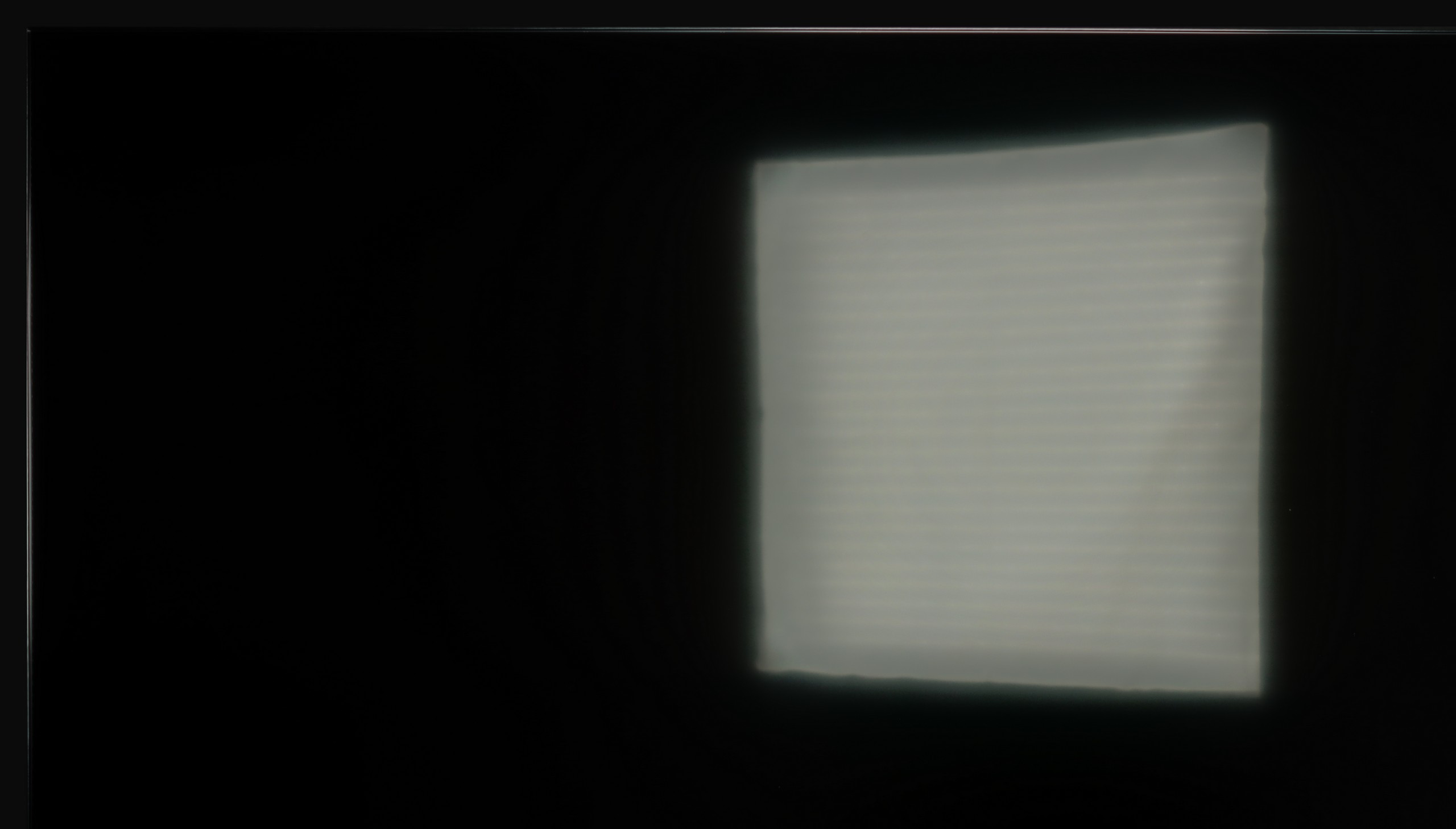


Panel brightness
Average luminance SDR
TCL C7K / QM7K: 475 cd/m2
TCL P7K / P79K: 299 cd/m2
The final practical test for any television is its daily performance in daytime conditions when it has to compete with ambient light. In this competition, the TCL P7K / P79K starts with a certain advantage in the form of a satin finish on the screen. Its structure handles direct reflections quite decently, diffusing them and protecting the image from excessive fading of colours or lightening of blacks. However, the passive struggle against reflections is one side of the coin. The other is the active ability to 'break through' bright surroundings, and here one of the model's key limitations comes to light. The previously mentioned peak brightness of around 300 nits is simply too low to ensure a fully comfortable and dynamic viewing experience in a brightly lit living room. In such conditions, the image may lack punch, and scenes with lower brightness can lose their clarity.
Fortunately, the TCL C7K performs quite well in bright rooms. The applied panel has a satin finish that effectively suppresses reflections, which means we don't have to worry about lamp or window reflections even on sunny days. Importantly, the colours maintain their intensity and do not wash out, as can happen with weaker matte panels. In terms of brightness, the average for content like YouTube or regular television is slightly below 500 nits. This is not a record-breaking result – for example, the MQLED85 (C765) performs better in this regard. However, for everyday viewing during the day, it should work without major issues, provided we do not plan to place it opposite a south-facing window without curtains.
Panel details
Subpixel Structure:
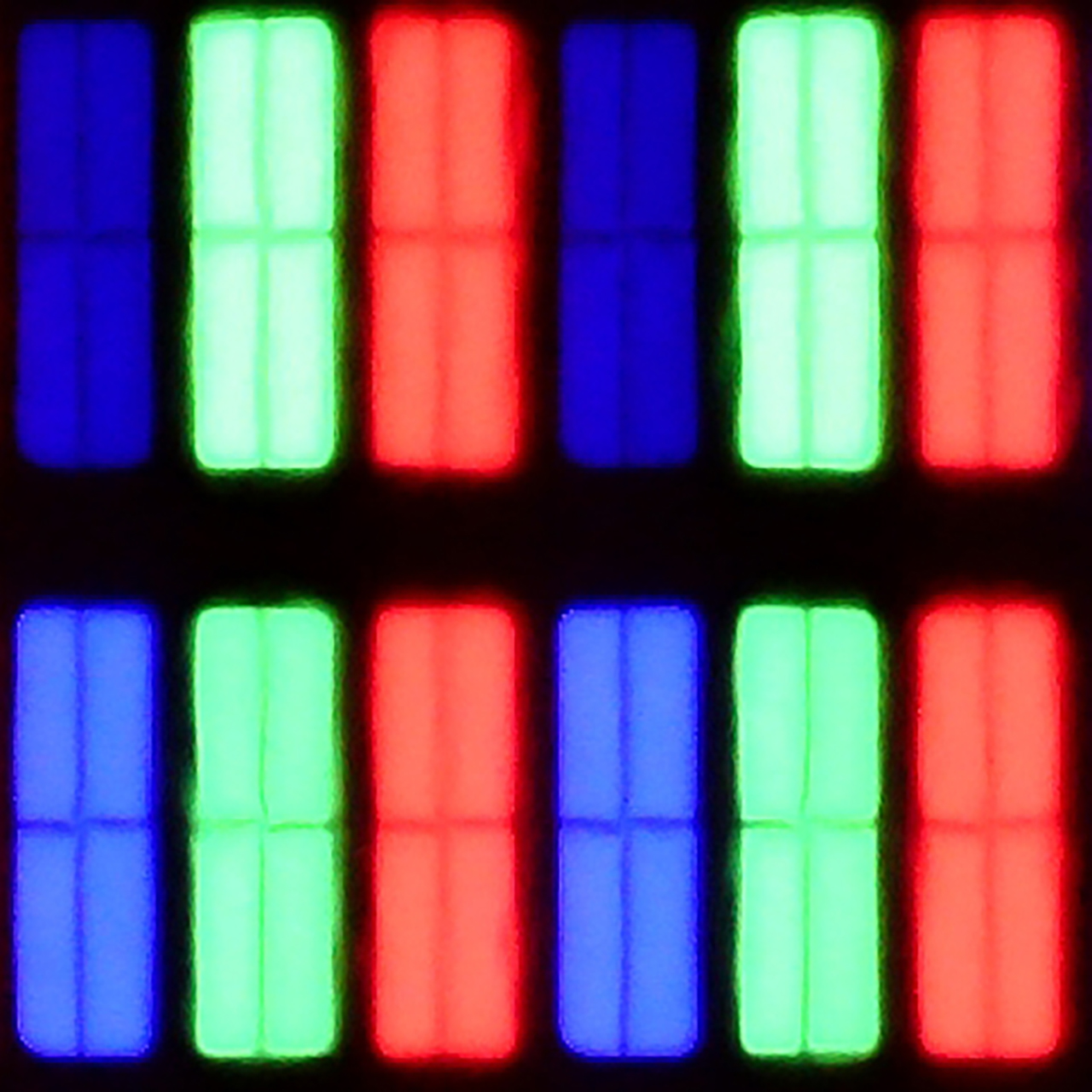
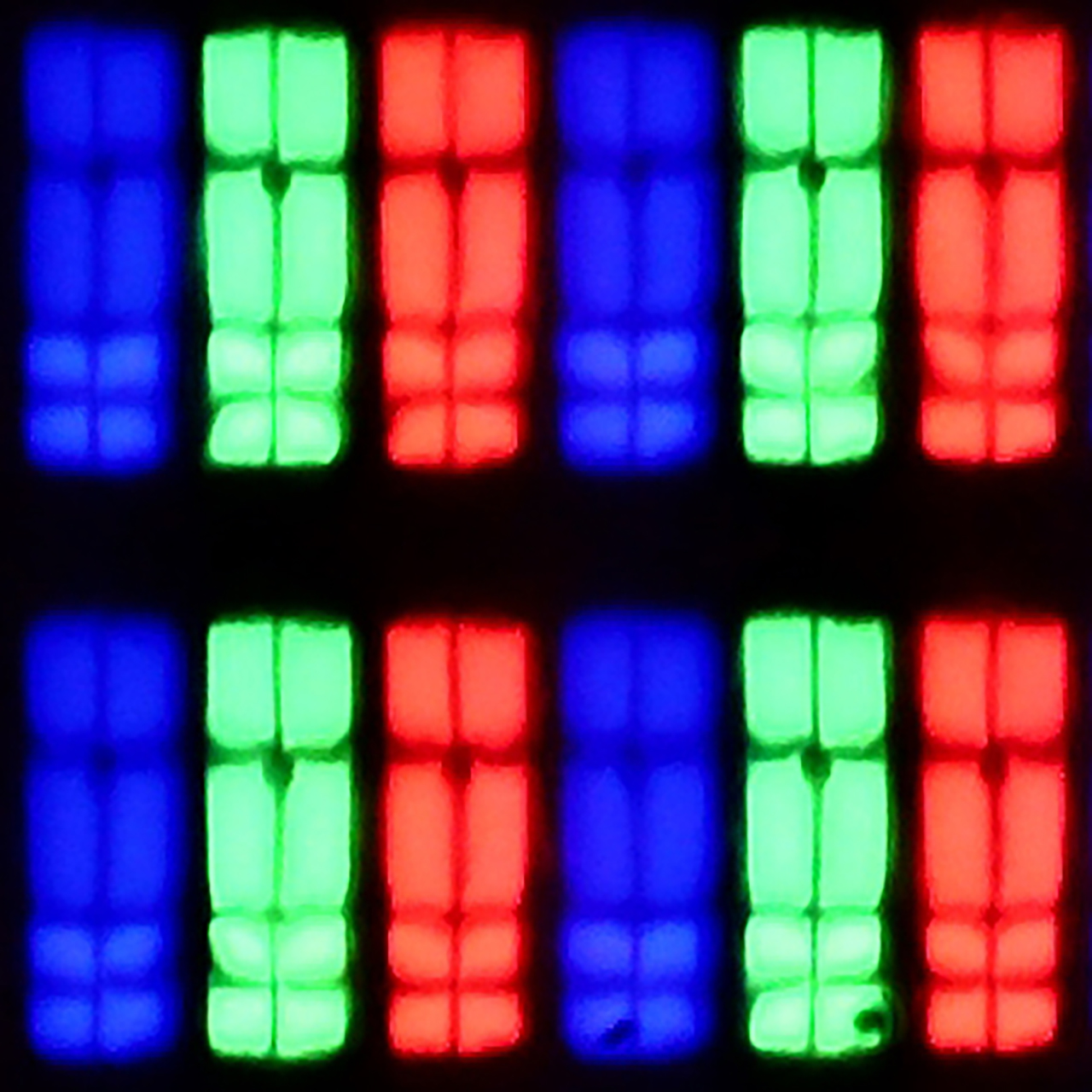
Panel uniformity and thermal imaging:

TCL P7K / P79K
TCL C7K / QM7K
TV features
7/10
7.3/10
- HDMI inputs0 x HDMI 2.0, 3 x HDMI 2.1 48Gbps2 x HDMI 2.0, 2 x HDMI 2.1 48Gbps
- Other inputsToslink (Optical audio)
- OutputsToslink (Optical audio), eARC (HDMI), ARC (HDMI)Toslink (Optical audio), eARC (HDMI), ARC (HDMI)
- Network InterfacesWi-Fi 2.4GHz, Wi-Fi 5GHz, Ethernet (LAN) 100MbpsWi-Fi 2.4GHz, Wi-Fi 5GHz, Ethernet (LAN) 100Mbps
- TV receptionDVB-T, DVB-T2, DVB-S, DVB-S2, DVB-CDVB-T, DVB-T2, DVB-S, DVB-S2, DVB-C
Classic features:
- Recording to USB (terrestrial TV)
- Recording programming
- Picture in Picture (PiP)
- RF remote control (no need to aim at the screen)
- Backlit remote control
- Teletext
- Audio only mode
- Bluetooth headphones support
- Simultaneous Bluetooth headphones & TV audio
Smart features:
- AirPlay
- Screen mirroring (Windows Miracast)
- Voice search
- Voice search in native language
- Ability to connect a keyboard and mouse
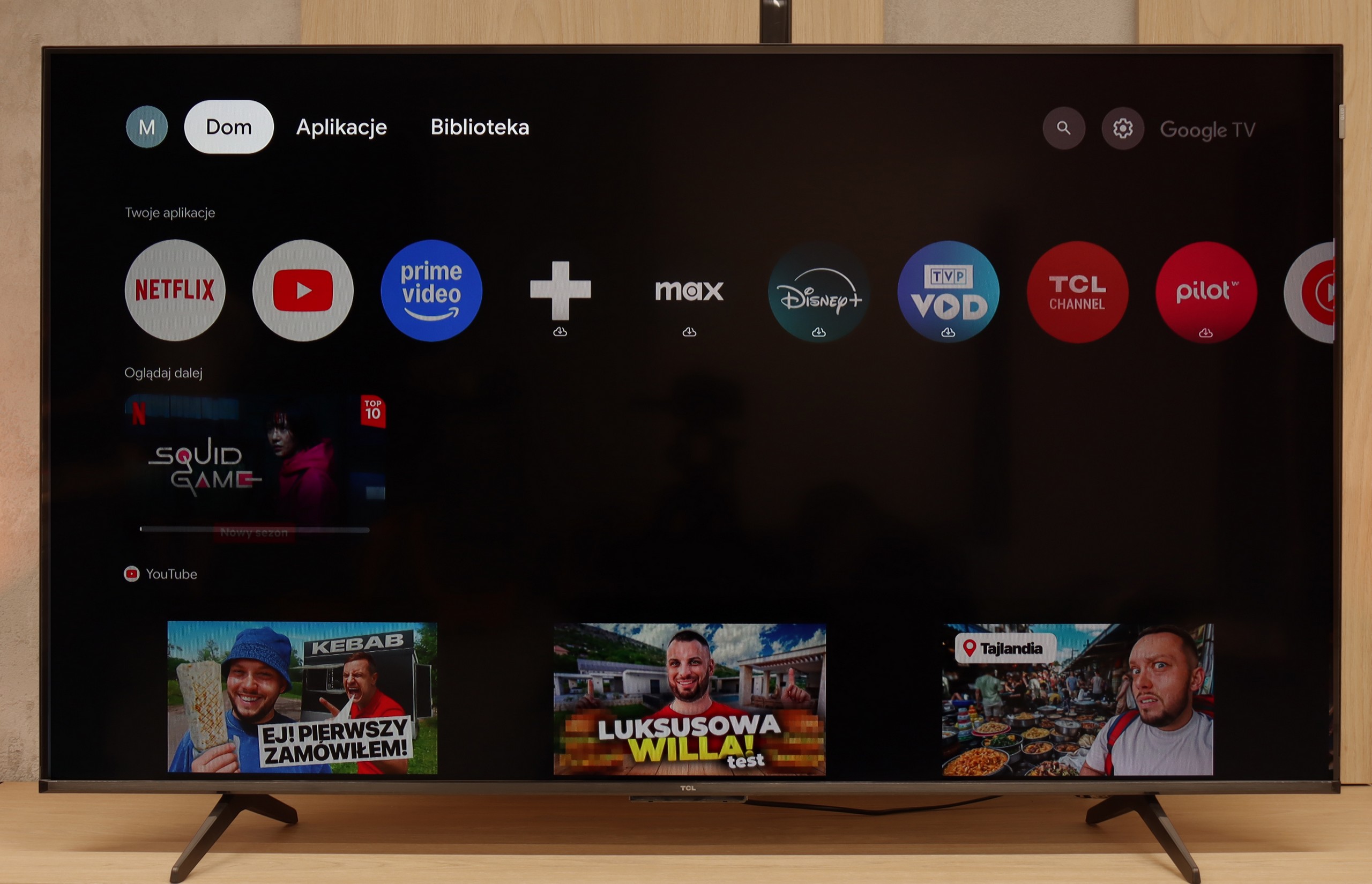
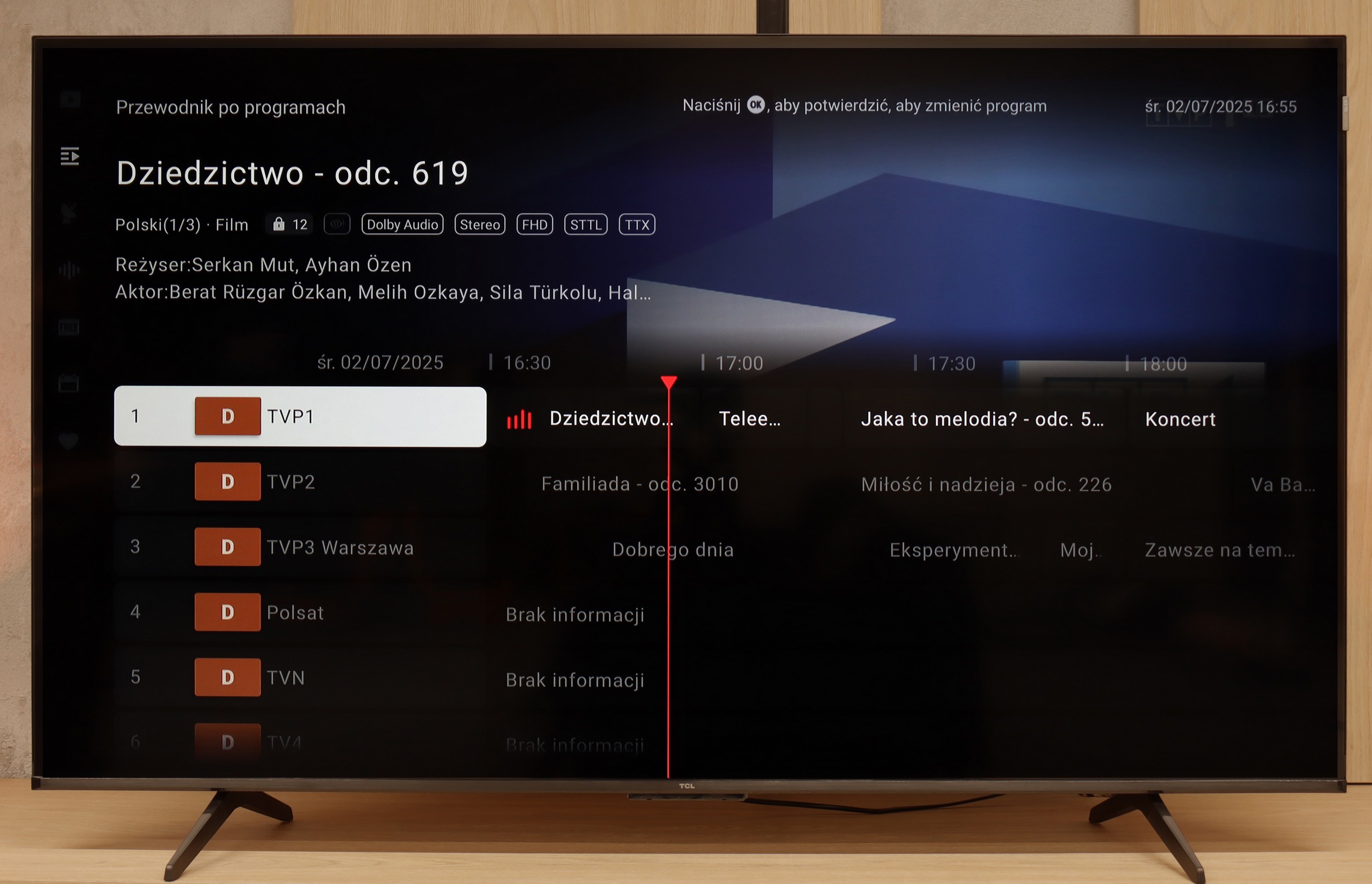
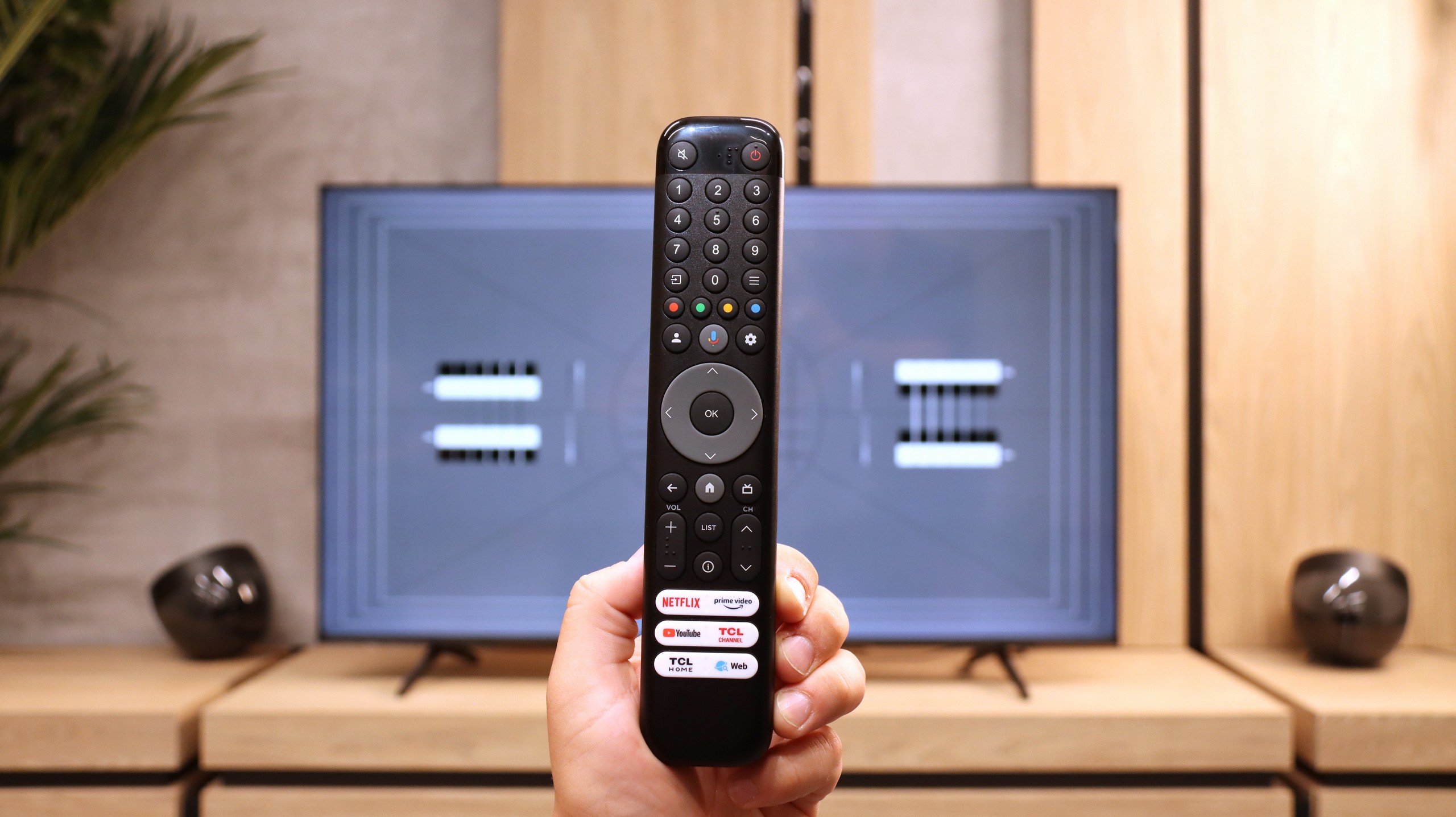
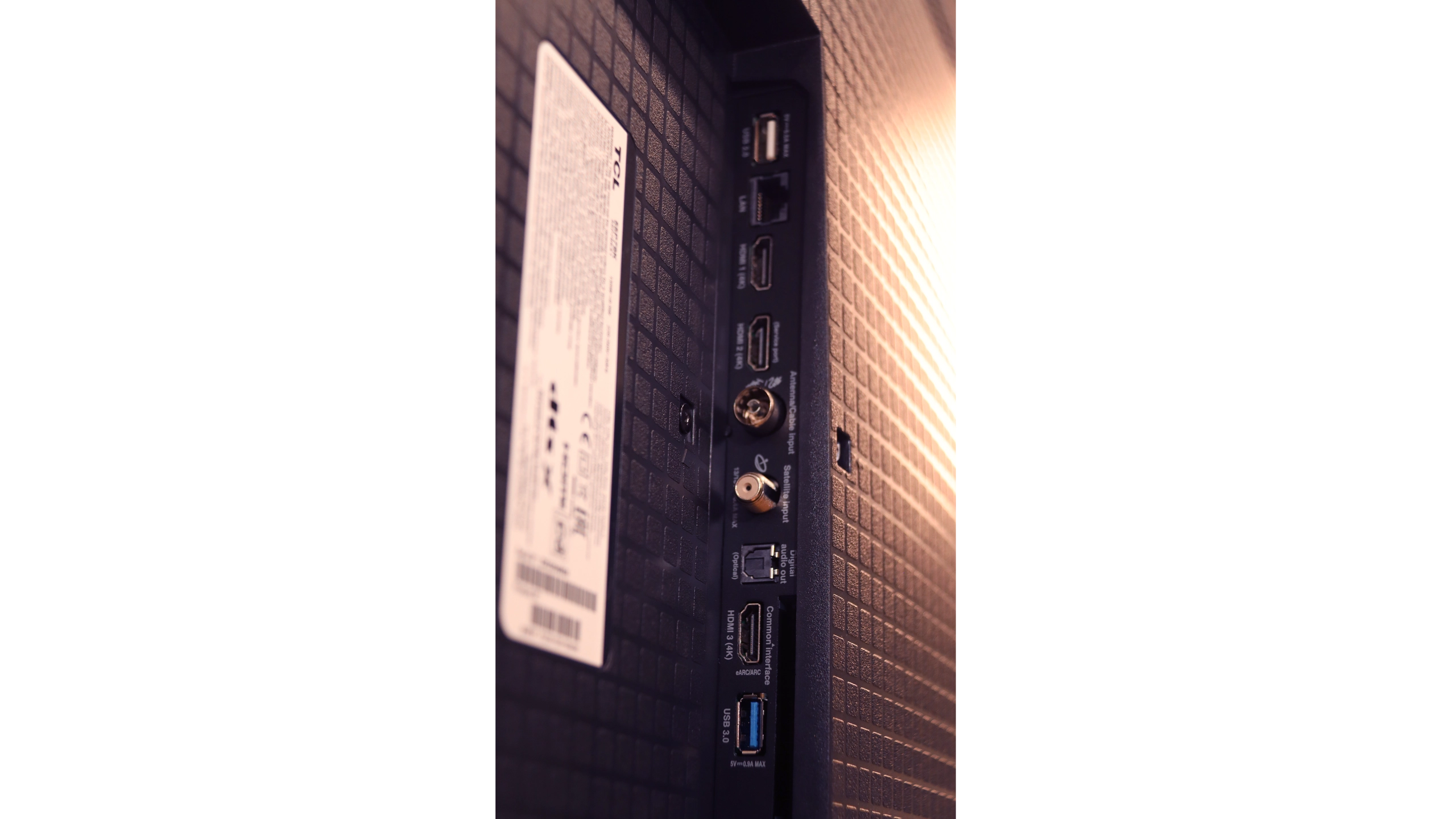
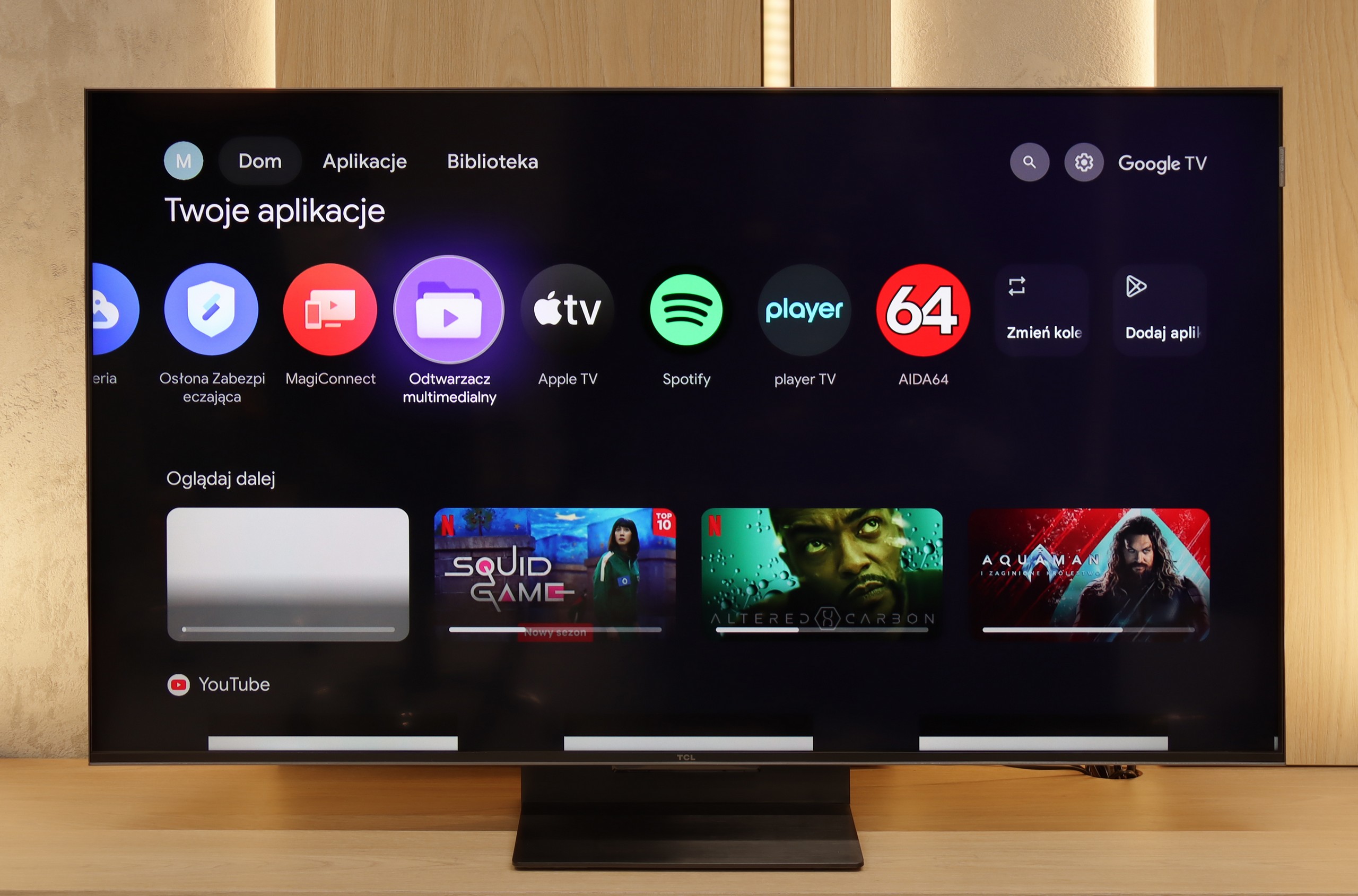
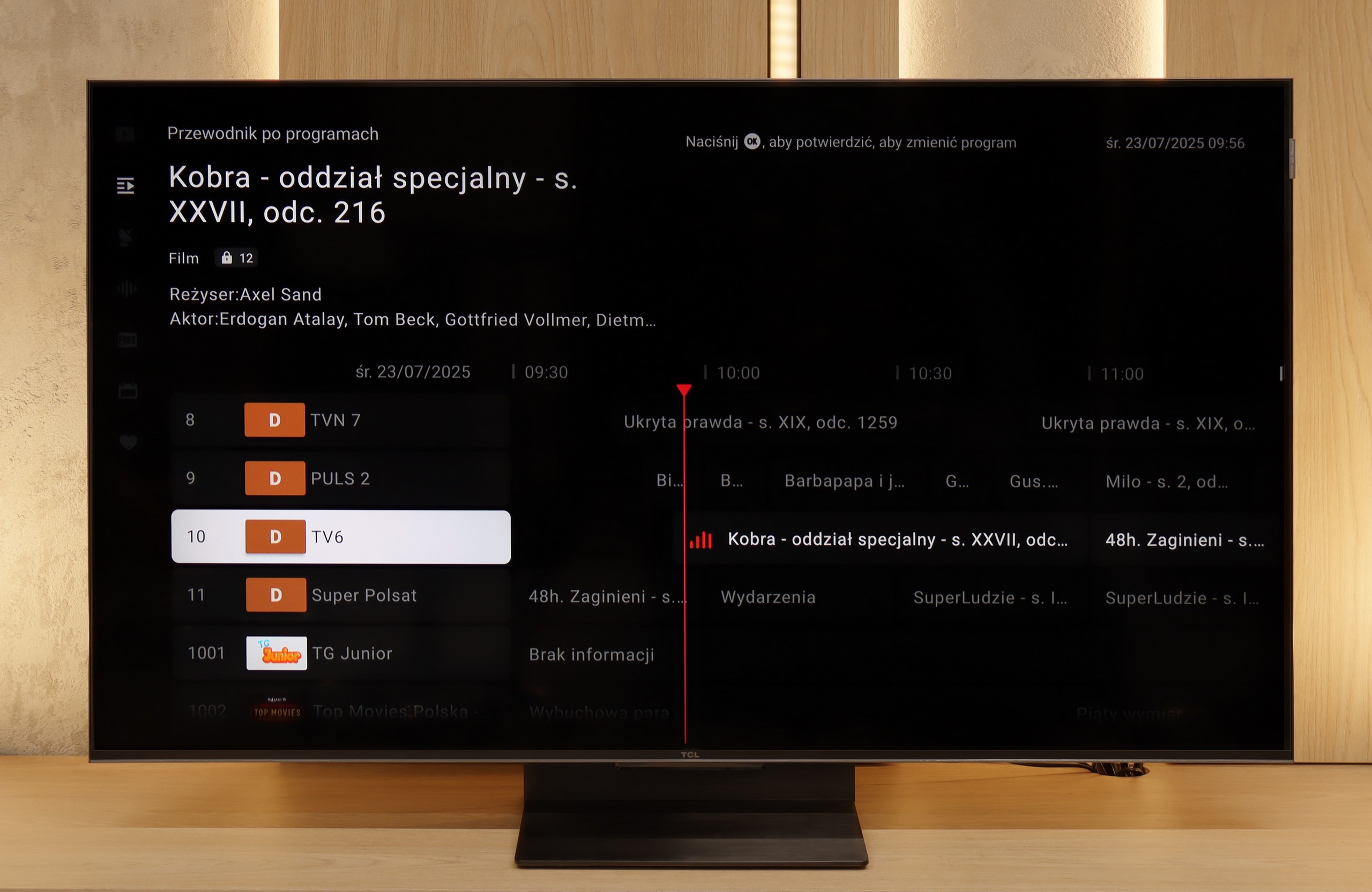
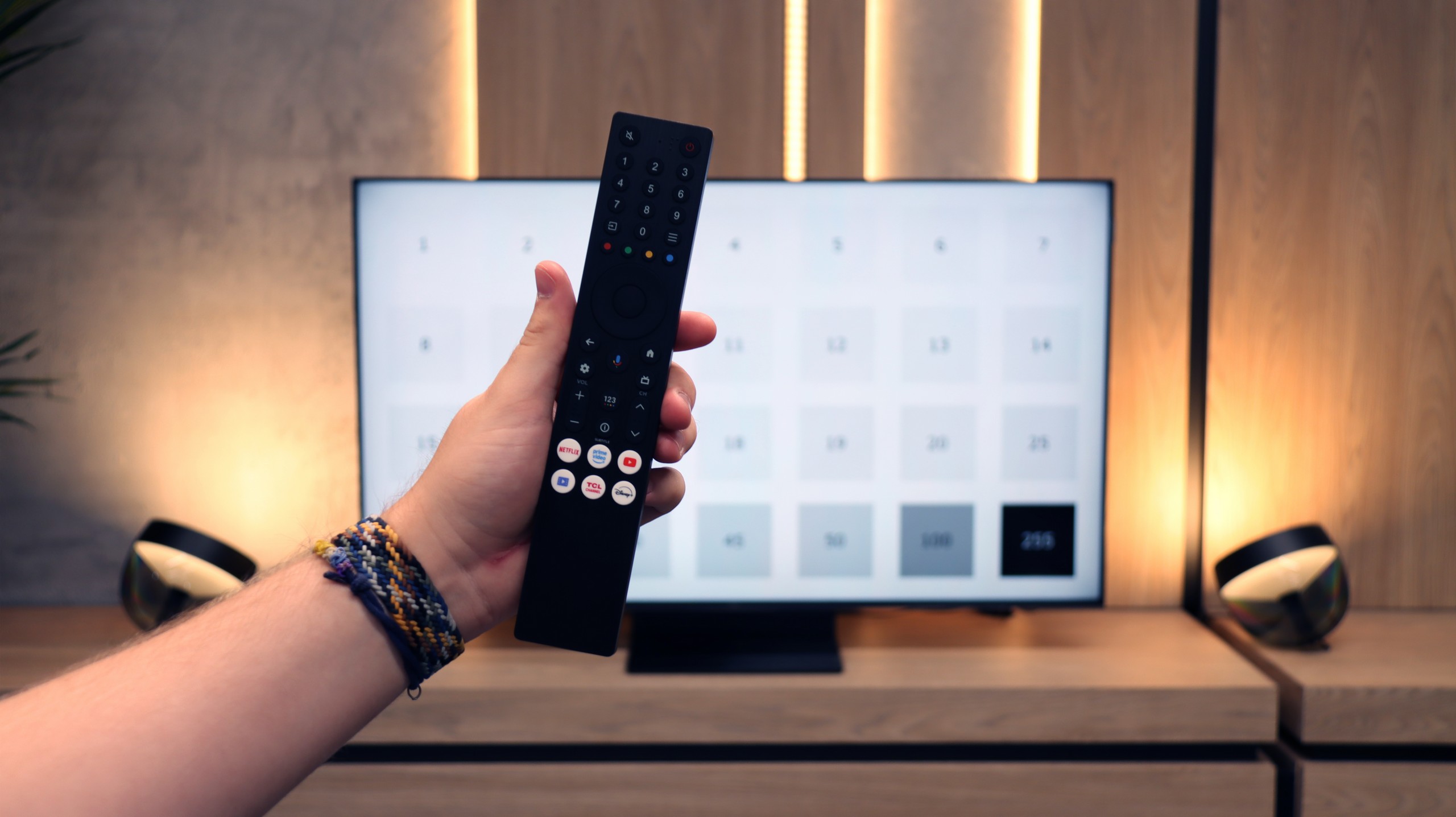
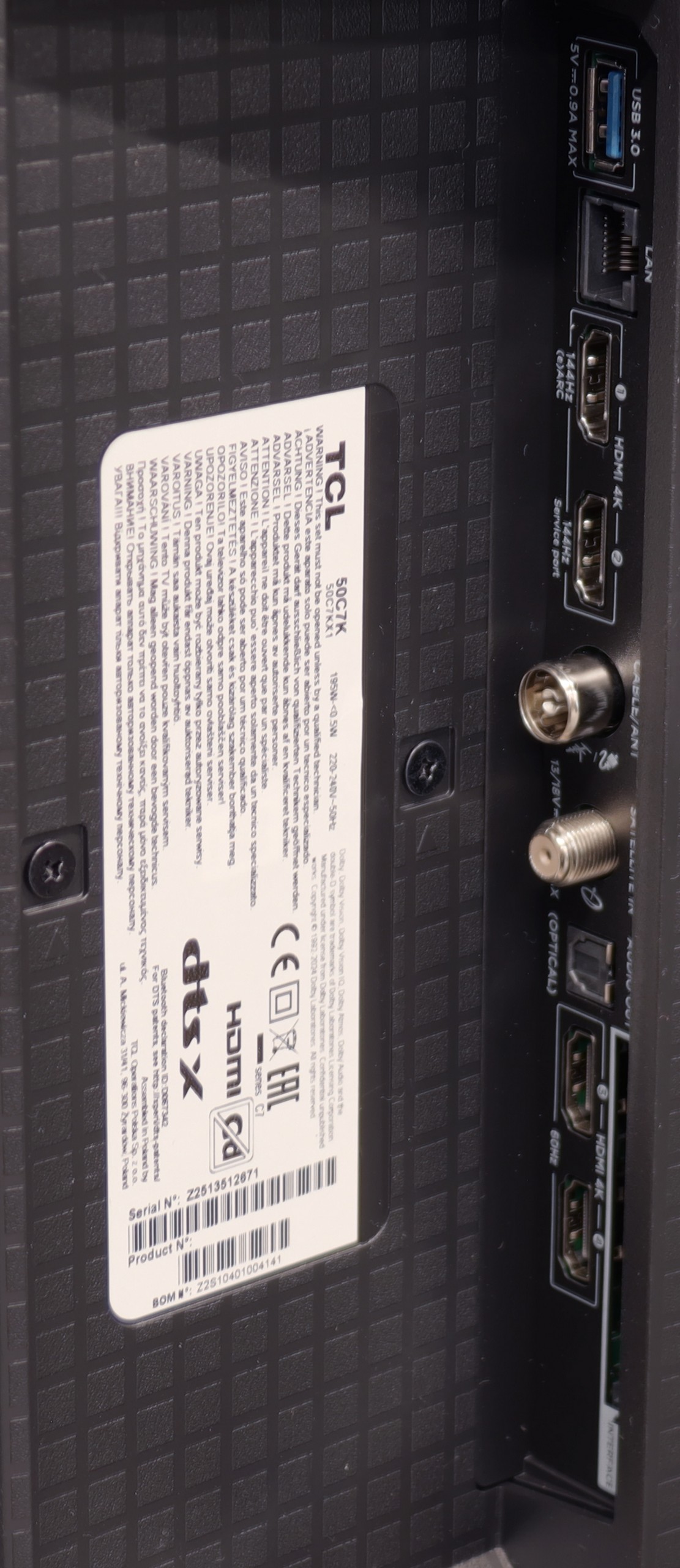
Smart Features – the Power of Google TV
The heart and operating brain of the TCL P7K / P79K is the Google TV system, which is a significant advantage in itself. This platform opens access to an almost limitless library of applications from the Play Store, ensuring that we won't miss any key streaming service. Integration with other devices is exemplary – Apple users will appreciate the seamless collaboration thanks to AirPlay, and Windows and Android users can easily utilise screen mirroring features. One should also highlight Google Assistant, which performs exceptionally well with voice search in Polish, remaining one of the most effective and convenient solutions of its kind on the market. The system’s performance on the tested model can be described as "above average." The interface is mostly smooth, but during tests, there were occasional slowdowns and even sporadic "freezes" that required a moment of patience. Minor glitches can also be seen in the translation of some system messages, which can be clumsy – however, these are minor oversights on TCL's part that do not affect overall functionality.
Classic Features
In the era of smart systems, traditional television functions often take a back seat, and this is also the case here. A significant advantage is the inclusion of a classic remote control with a numeric keypad, which does not require precise aiming at the screen for communication, significantly enhancing user comfort. The presence of Bluetooth technology for connecting external devices, such as headphones or speakers, should also be regarded positively. However, this is essentially where the list of conveniences ends. It is evident that TCL has almost put everything on the Google TV card, treating classic functions as an absolute minimum. Therefore, we will not find options to record programmes from built-in tuners to a USB drive or the once-popular PiP (Picture-in-Picture) feature. This is, therefore, a basic package that simply works but does not offer anything beyond what is essential.
SmartTV: GoogleTV
The greatest strength of the TCL C7K in everyday use is undoubtedly the Google TV system. Thanks to it, we have access to an almost endless library of applications, including some more niche ones that are often unavailable on other platforms. The built-in Google Assistant understands Polish, so we can easily ask what’s on TV, what the weather is like, and even issue a few voice commands to control the television. The presence of Chromecast and AirPlay, which work smoothly and make life easier, is also a plus.
User Functions
On the downside, the classic features are somewhat lacking. Of course, we have the basics – teletext, EPG, and the ability to connect headphones – but that’s about it. There is no USB recording feature or picture-in-picture (PiP) mode, which can still be found among competitors. It’s also worth remembering that Google TV in the TCL edition can sometimes have strangely translated parts of the menu or minor errors in the interface. These are not things that interfere with daily use, but those sensitive to details may notice them.
Playing files from USB
7.2/10
9.2/10
Supported photo formats:
Maximum photo resolution:
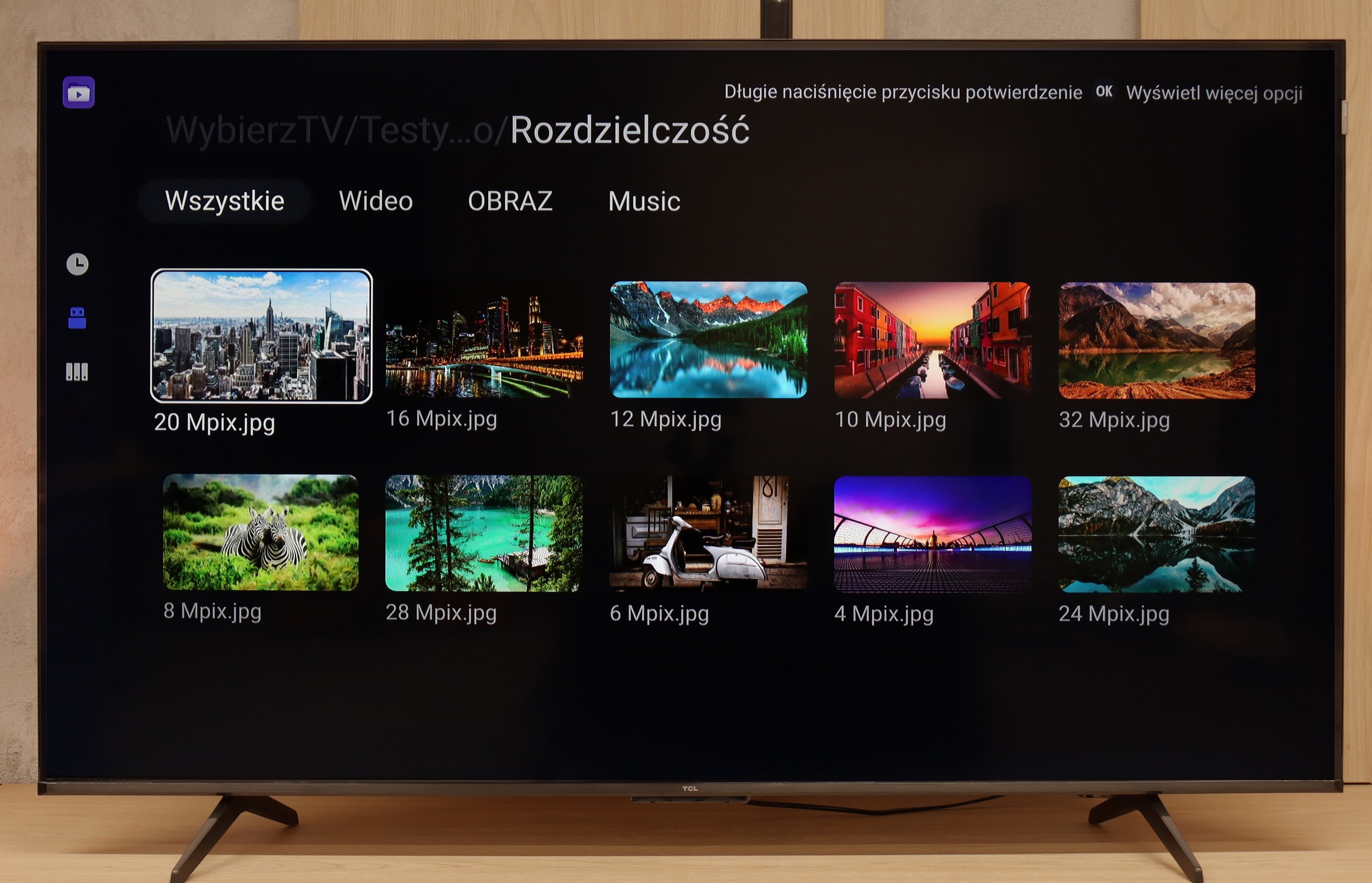
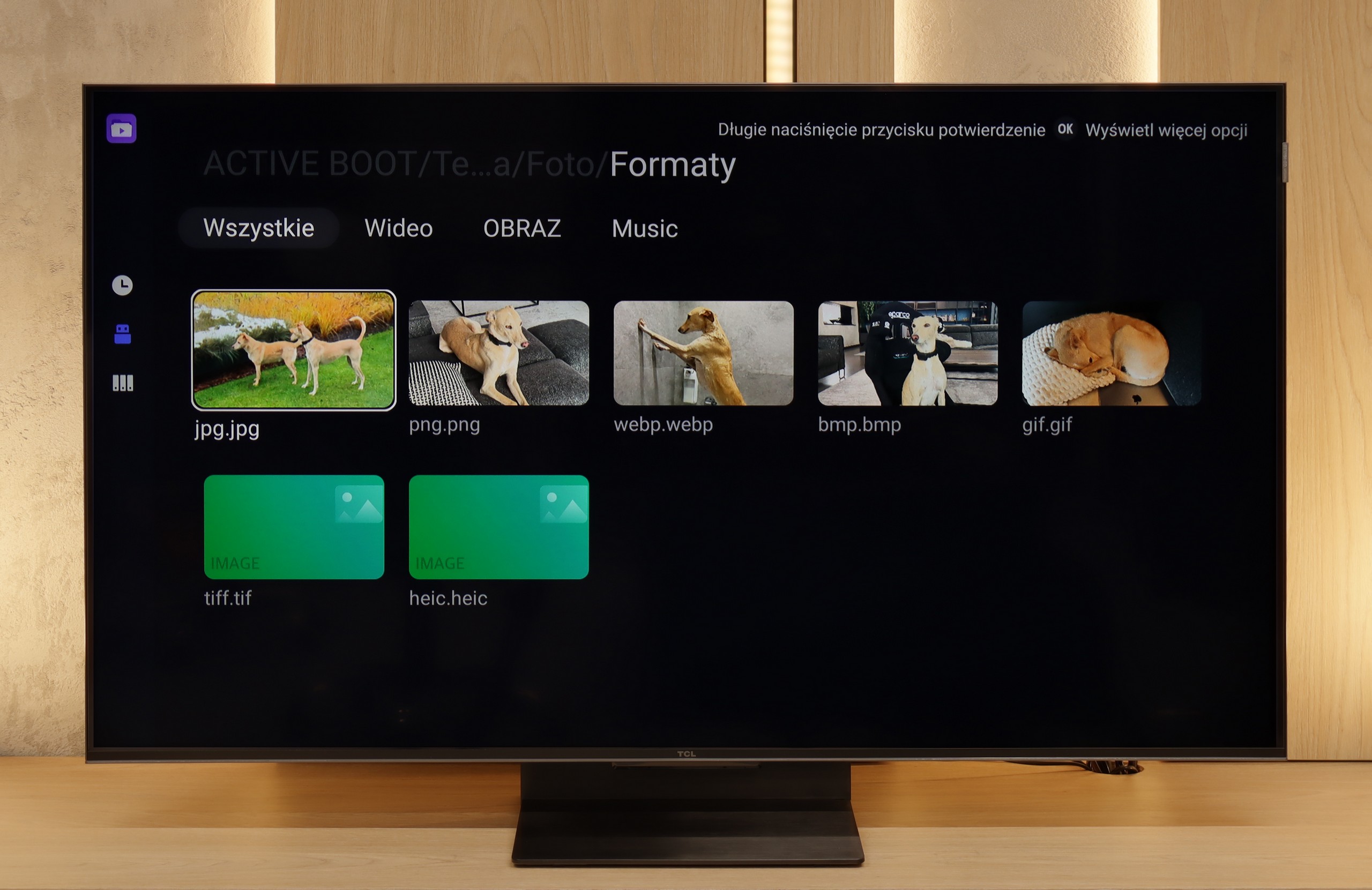
The built-in media player in the P7k/P79k model is quite a puzzling case, placing us in a rather unusual situation. On one hand, its engine manages to decode most popular video formats, which is obviously good news. On the other hand, we encountered a surprising and frustrating flaw – the default app has a fundamental issue with correctly displaying Polish diacritical characters in subtitle files. Instead of letters like "ą," "ę," or "ż," empty squares or random, unreadable symbols appeared on the screen. Fortunately, thanks to the flexibility of the Google TV system, this issue can be easily circumvented. Installing an alternative, advanced player, such as the tried and tested VLC or KODI, fully resolves this inconvenience. The situation is particularly odd since we didn't encounter such a flaw in other TCL models we tested previously. We are therefore dealing with an obvious software oversight, which we hope will be fixed in a future update.
The built-in file player in the TCL C7K performs really very well. It supports most of the most popular audio and video formats, so if we want to quickly plug something in from a USB drive and play it – there should be no problem. Of course, as is usually the case, we can find some minor shortcomings – not every exotic codec will work (Apple's HEIC), not all subtitles will be perfectly synchronised (txt.). However, the biggest advantage of this television comes to the rescue, namely Google TV. Thanks to access to the Google Play store, we can easily install an alternative player, e.g. VLC, and then no files will be a concern for us.
Apps
9.6/10
9.6/10














































Sound
6.2/10
7/10
- Maximum volume-76dB
- Dolby Digital Plus 7.1
- Dolby True HD 7.1
- Dolby Atmos in Dolby Digital Plus (JOC)
- Dolby Atmos in Dolby True HD
- DTS:X in DTS-HD MA
- DTS-HD Master Audio
In terms of the built-in audio system, the TCL P7k/P79k presents a level that can be described as functional and correct, but lacking audiophile ambitions. The speakers play quite loudly, and the dialogues in films and television programmes are delivered clearly and without distortion, which is crucial in everyday use. However, the soundstage definitely lacks a foundation in the form of low tones. This is a direct consequence of the absence of a dedicated subwoofer – an element that in the higher P8K series, represented by a large Onkyo subwoofer at the back of the cabinet, constituted the strength of its sound. Here, that element is simply missing, which makes the sound seem flatter and devoid of the depth that creates a cinematic atmosphere. We also noticed a peculiar aspect in the software – when attempting to set the maximum volume, the television automatically reduces it. It is difficult to determine definitively whether this is a form of protection against distortion or a minor software glitch; nonetheless, it’s a shame because the power reserves seem to be slightly greater.
To be honest, we didn’t expect much from the sound of the 50-inch version of the C7K model. Typically, in such sizes, it’s hard to get anything more than thin, flat sound. But here – a pleasant surprise. The audio proved to be really enjoyable, with good clarity and even a slightly discernible bass. This is probably related to TCL's new collaboration with the Bang & Olufsen brand, which is a novelty for 2025. Whether the C7K actually uses the original transducers from the Danish premium brand – we cannot confirm. But the end result still deserves a thumbs up. For a television without a soundbar – it sounds quite pleasant.
Acoustic Measurements
No acoustic data
76dBC (Max)
75dBC
